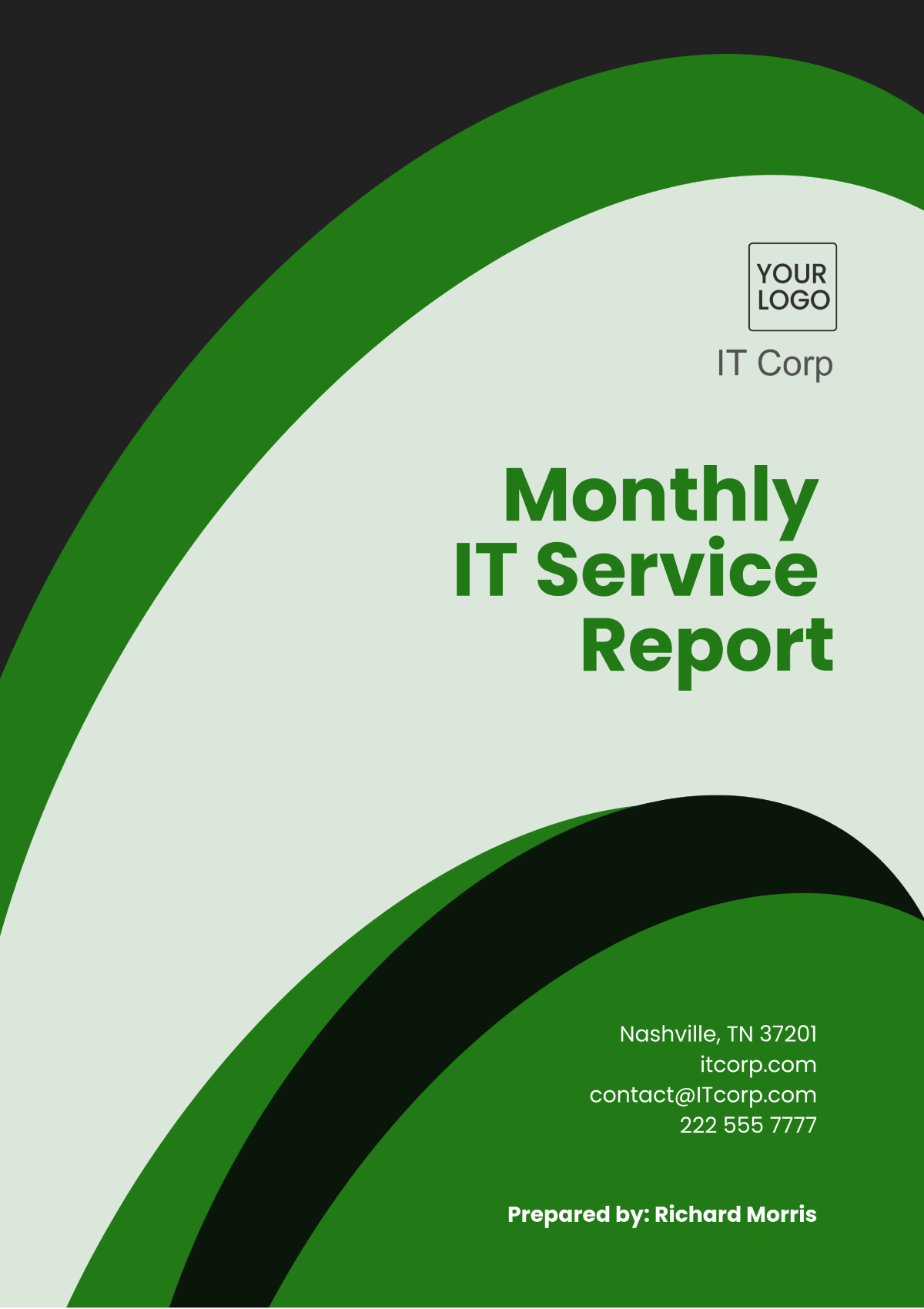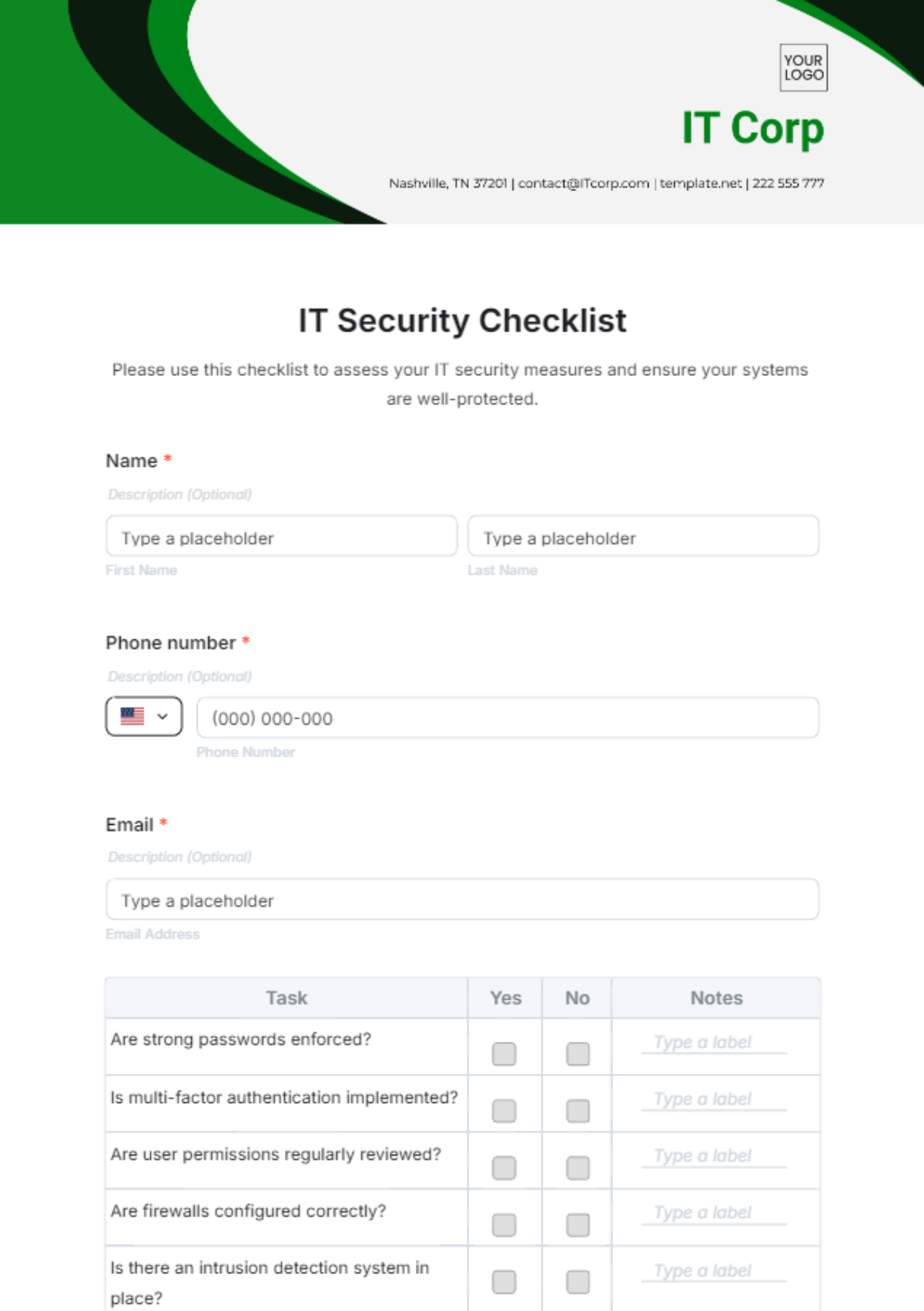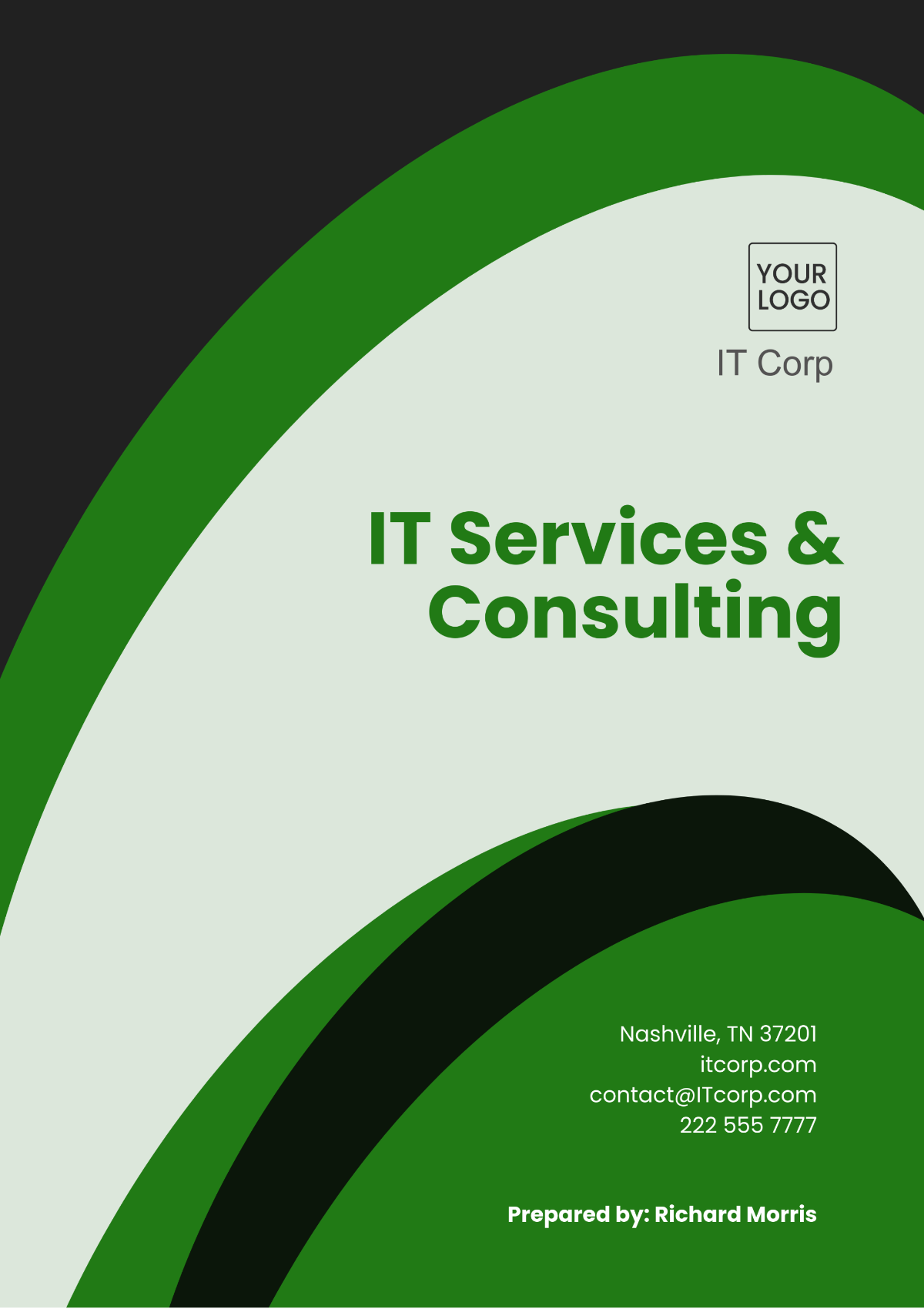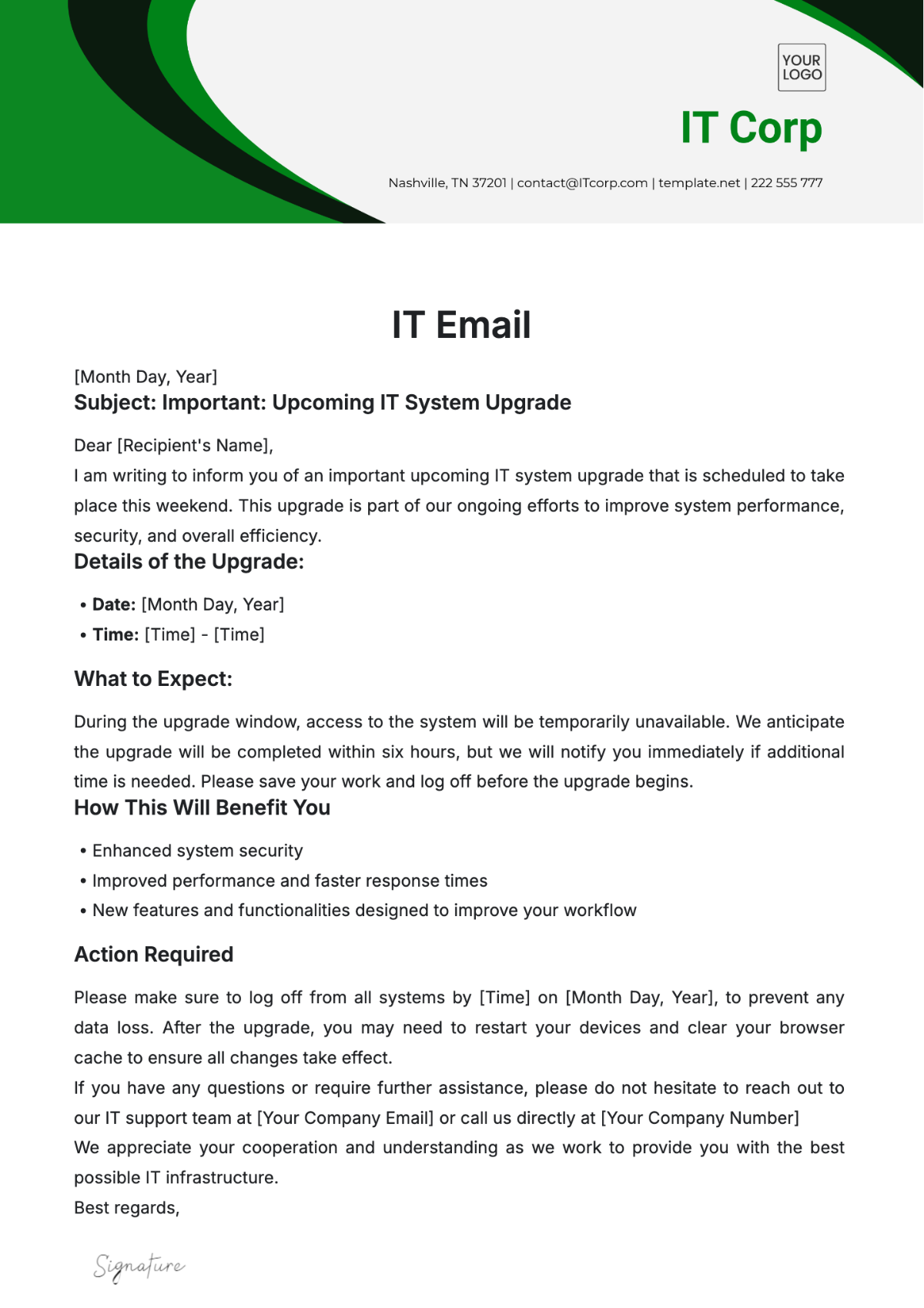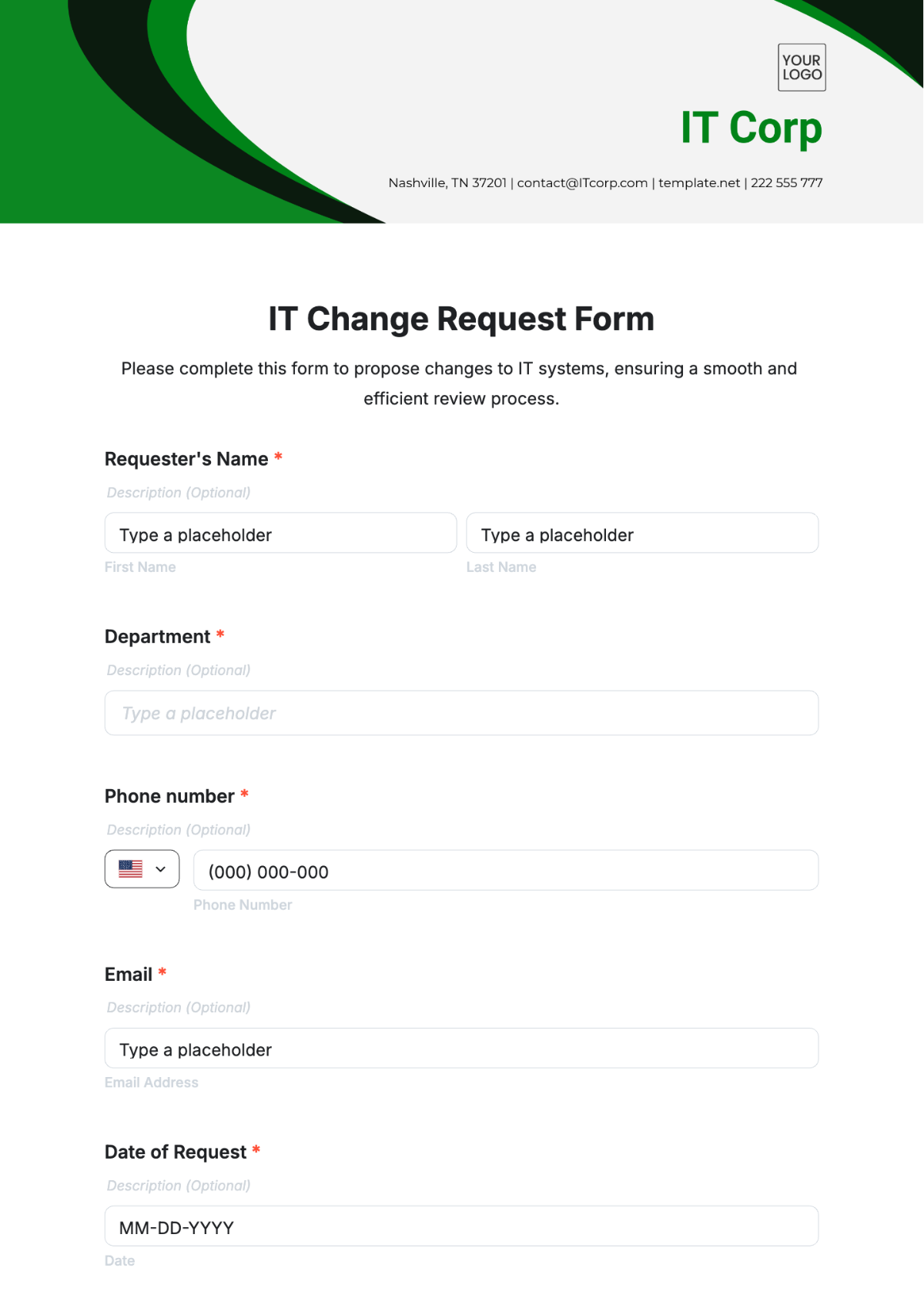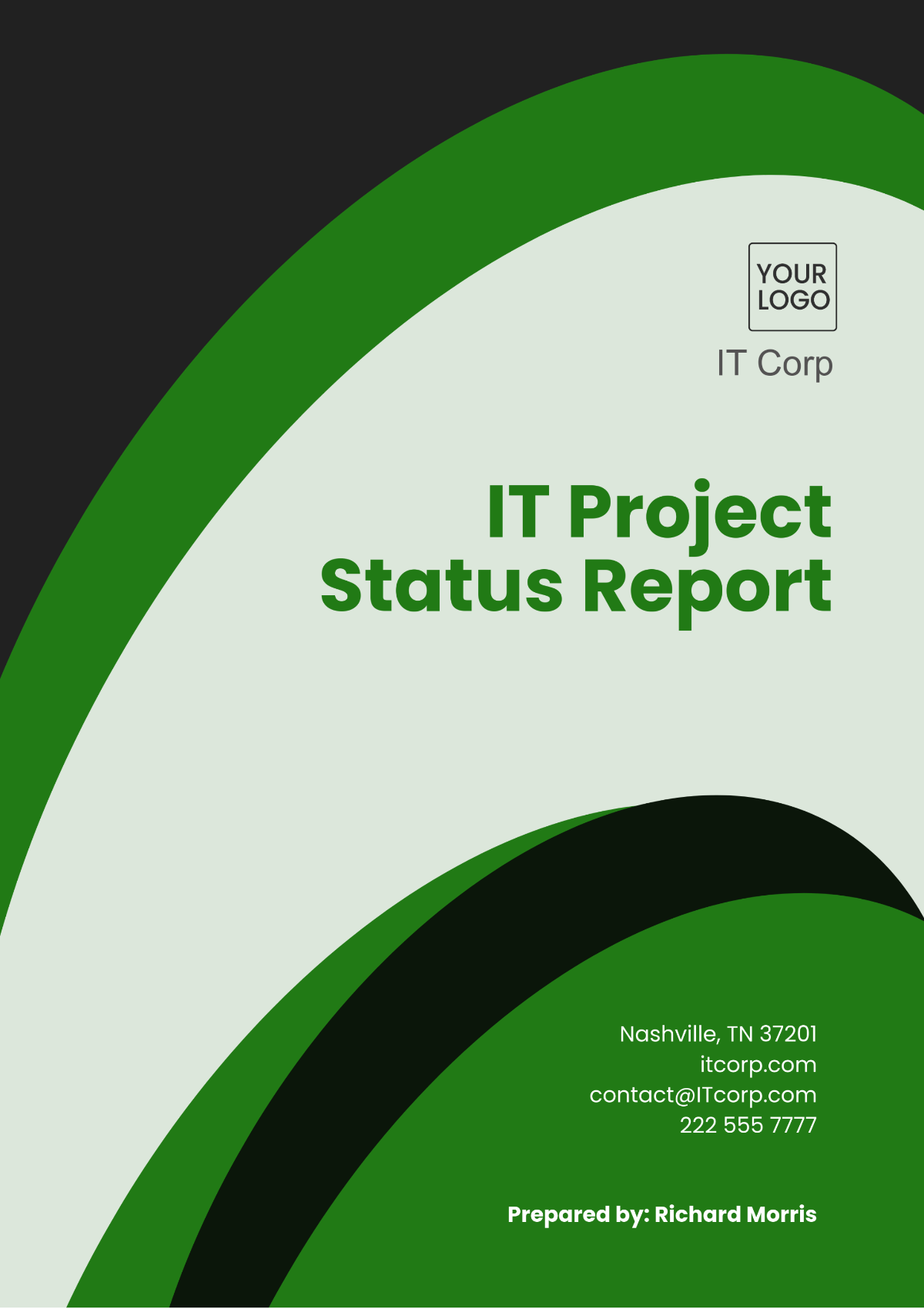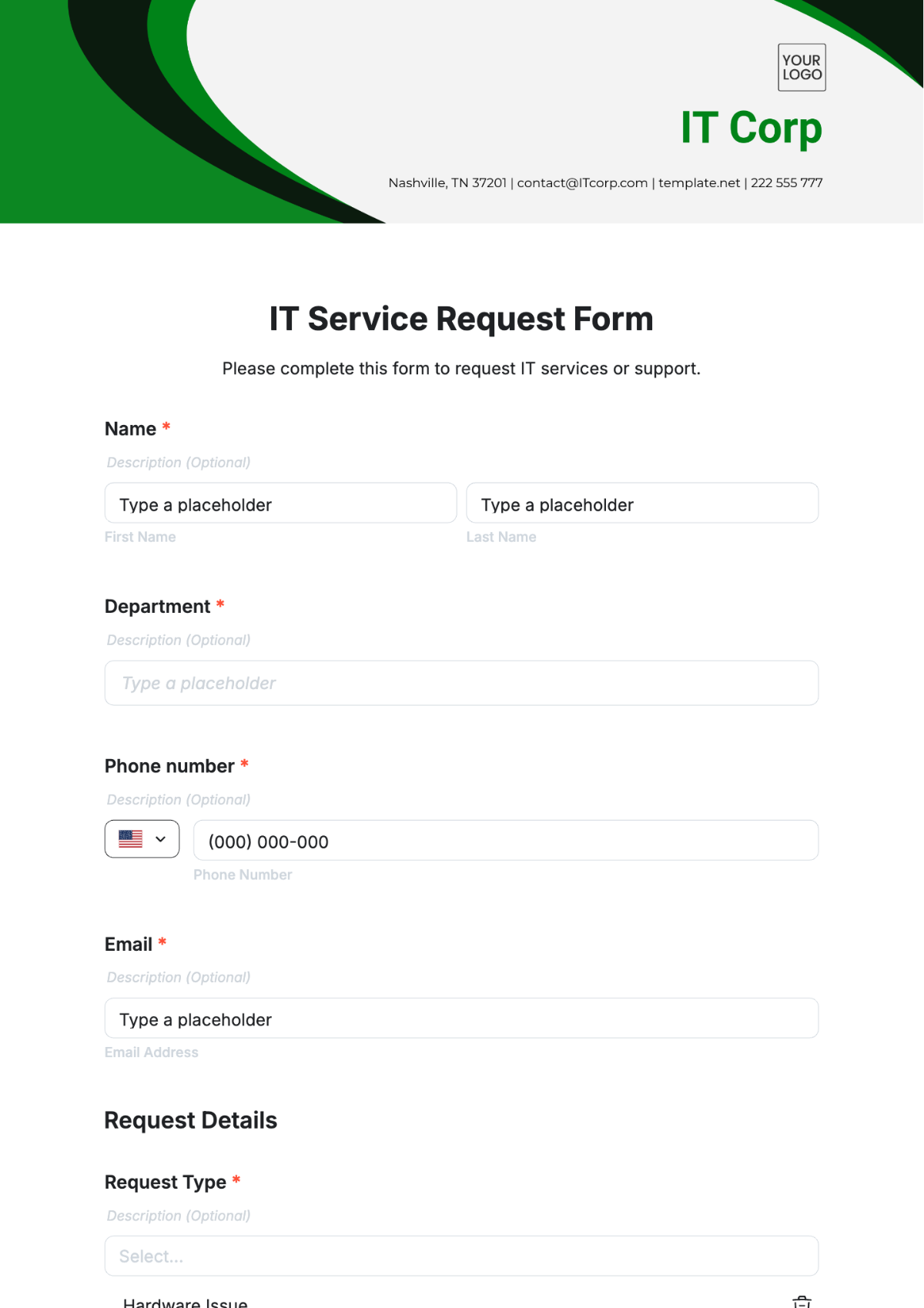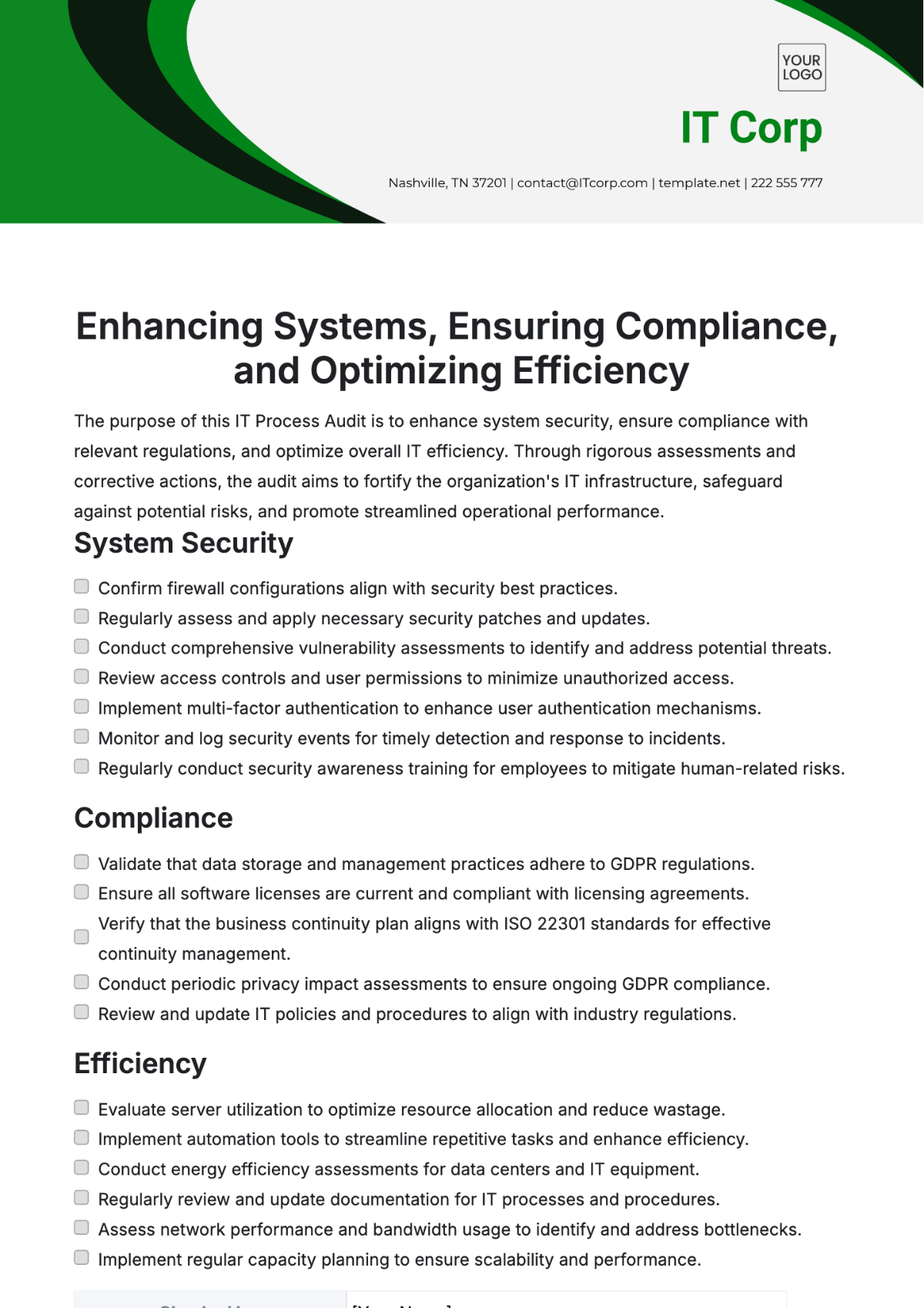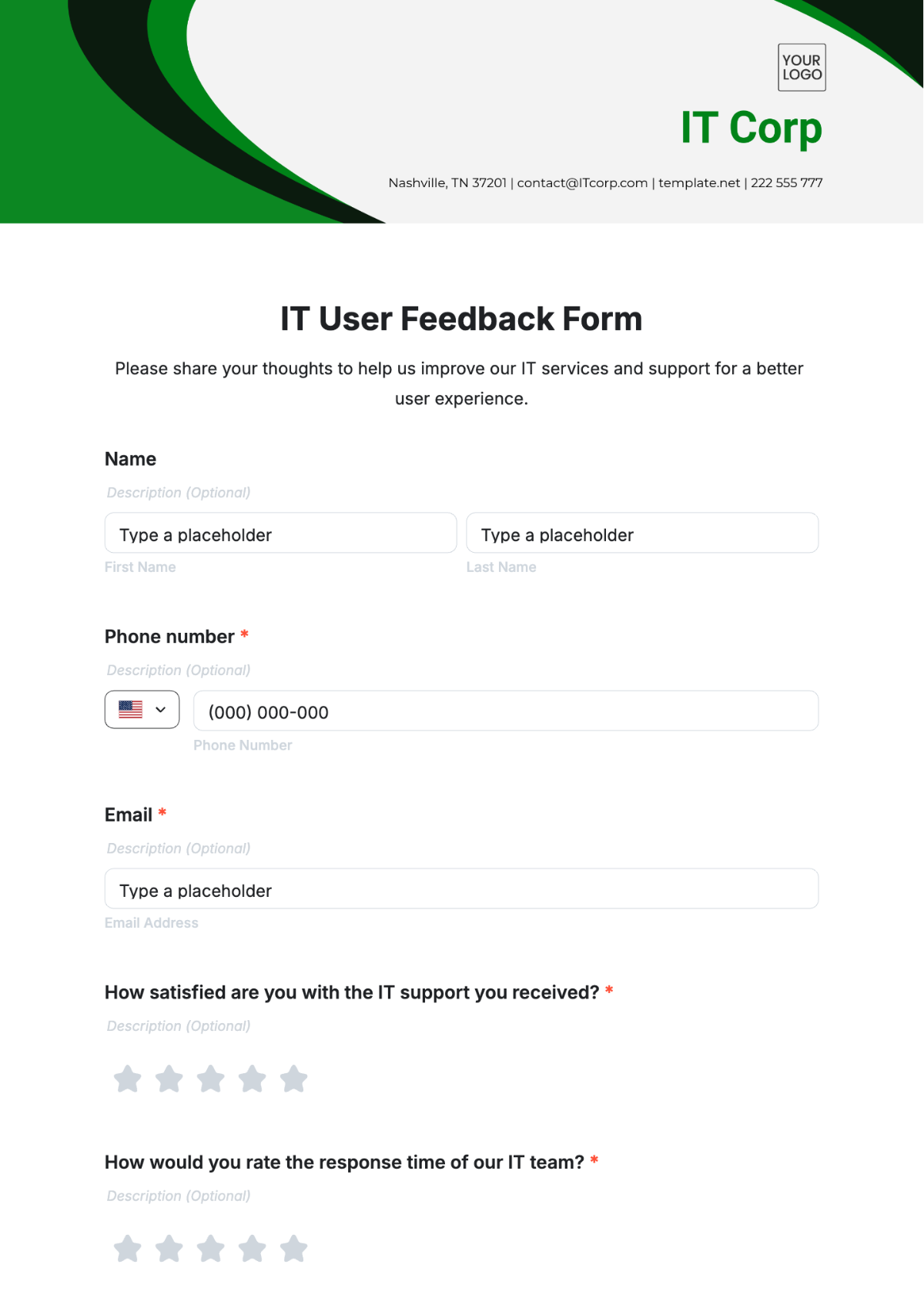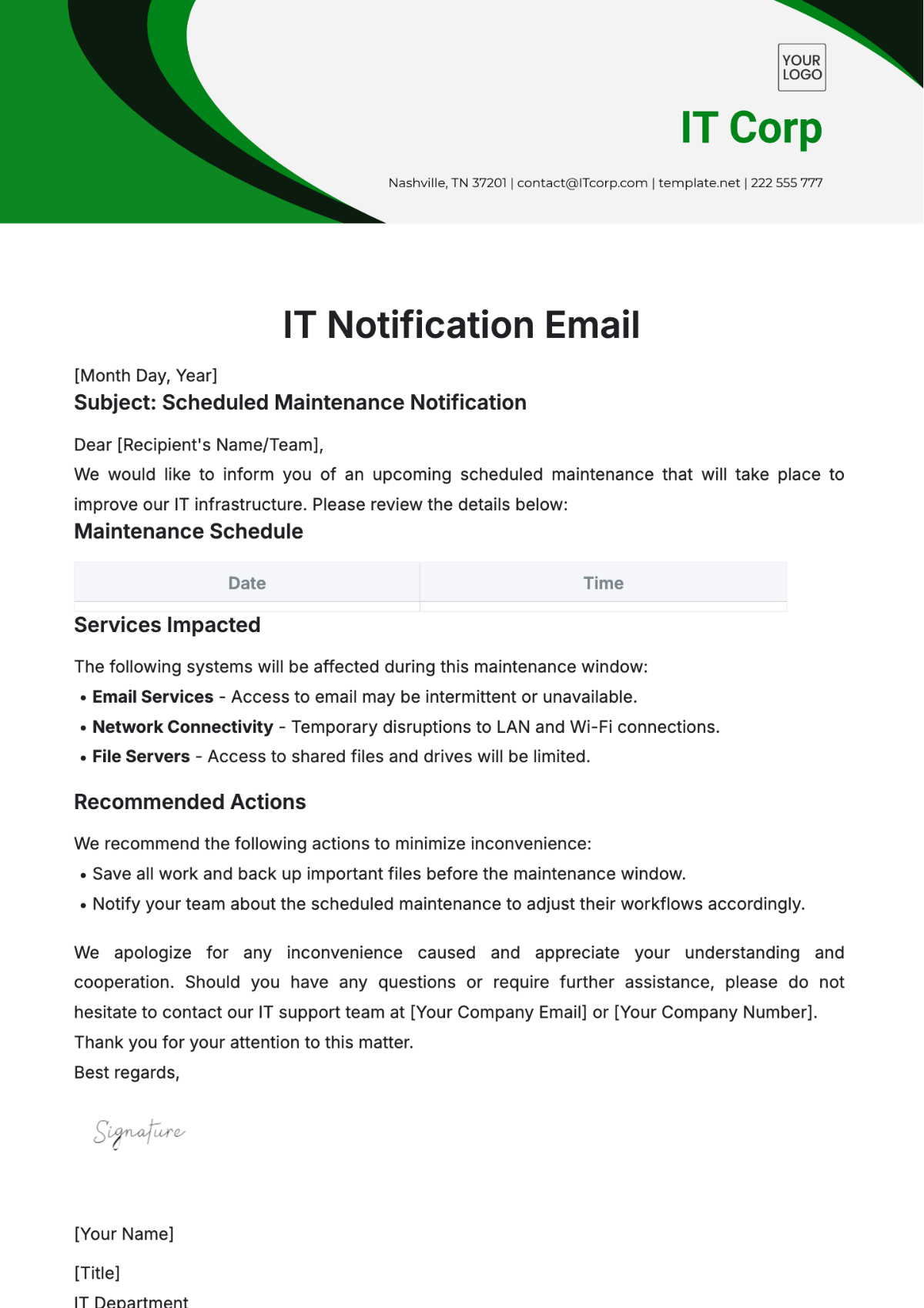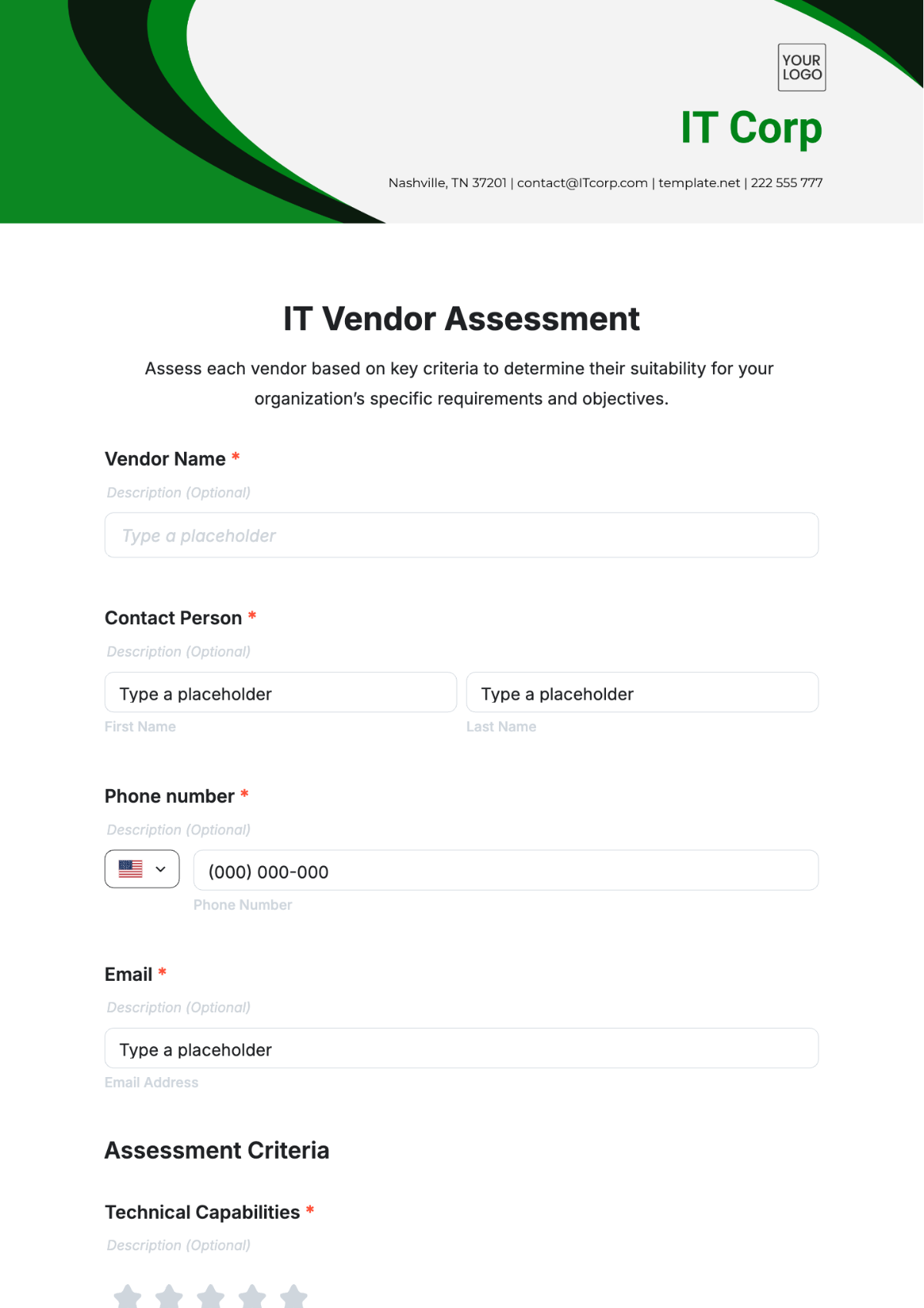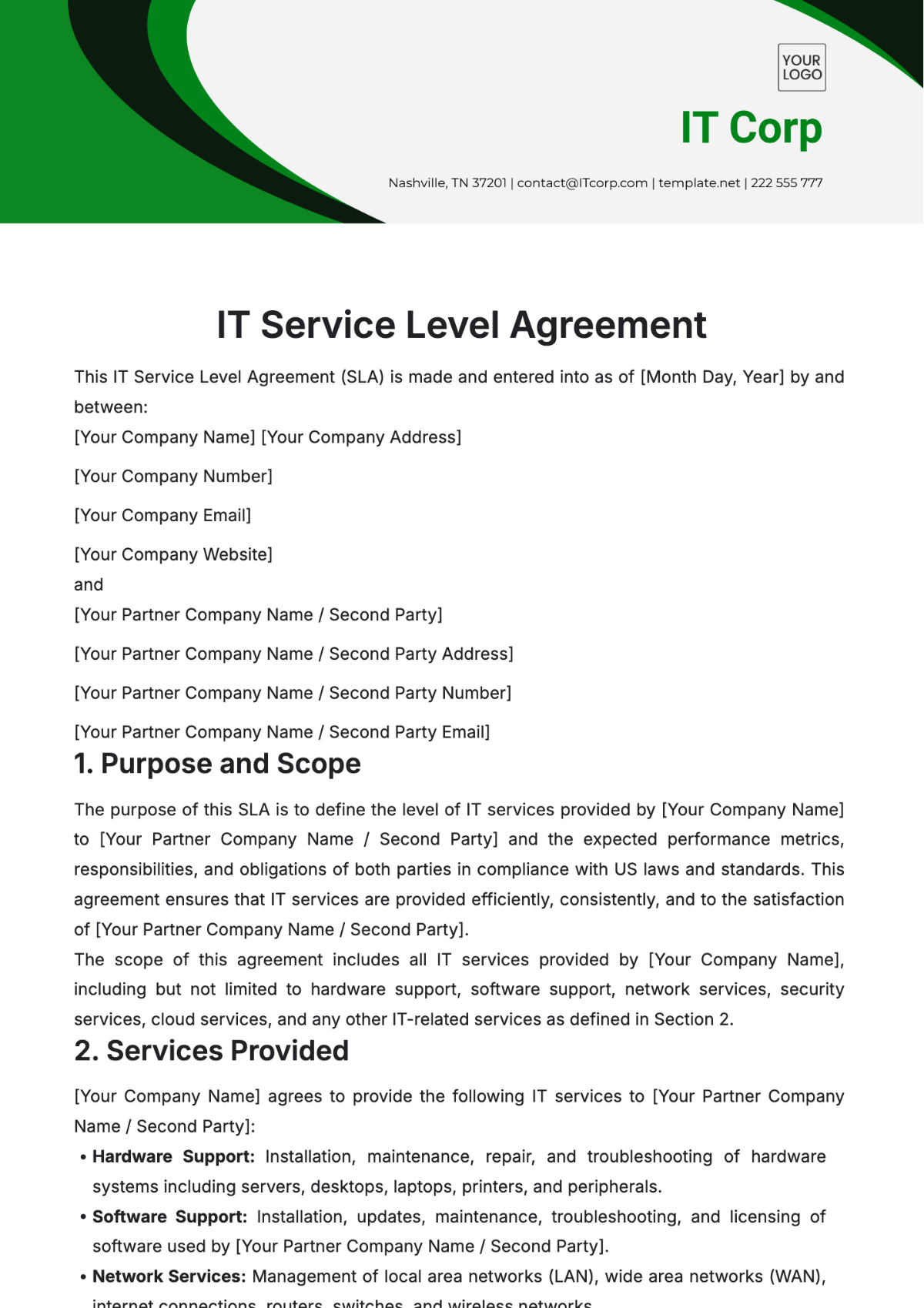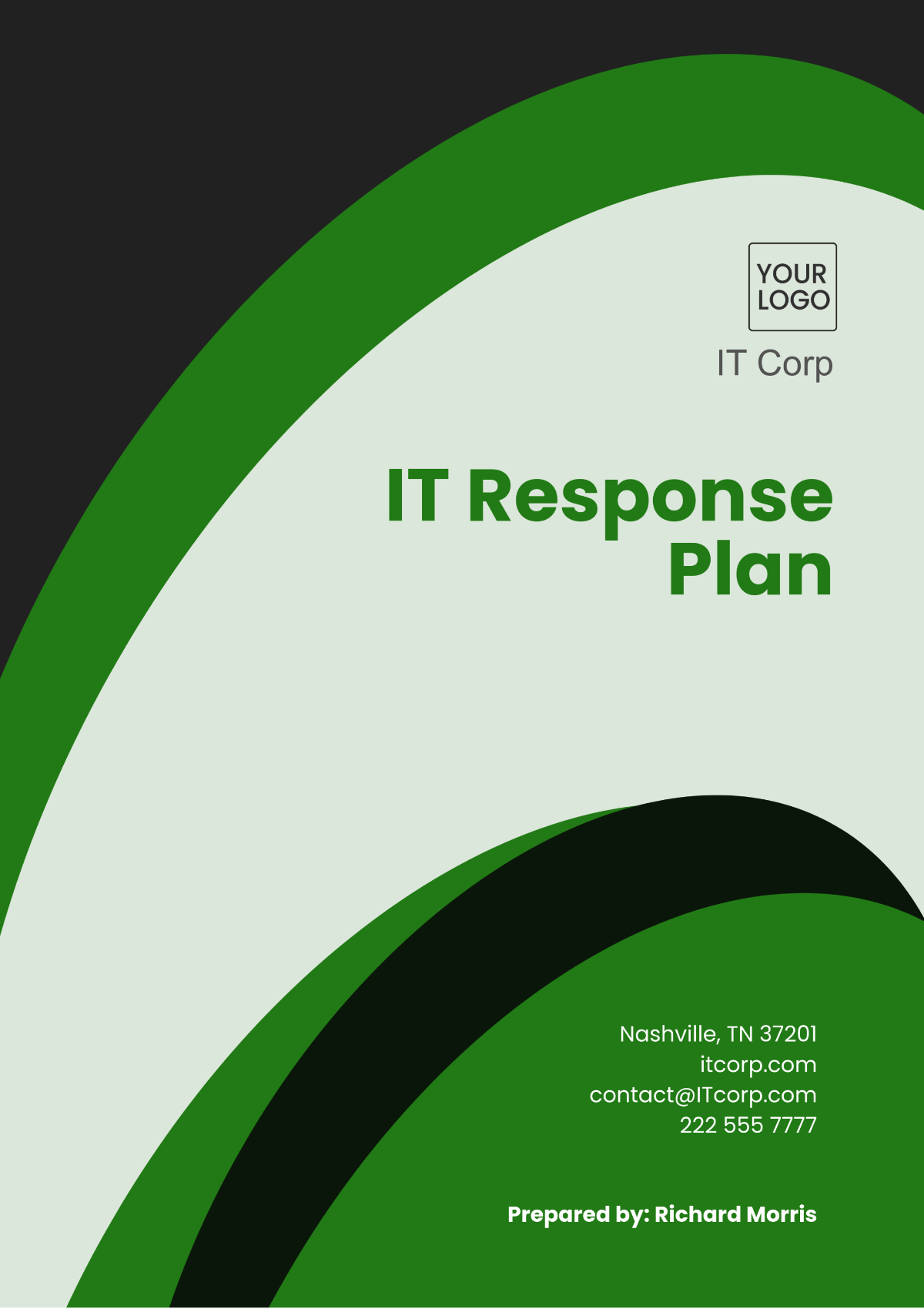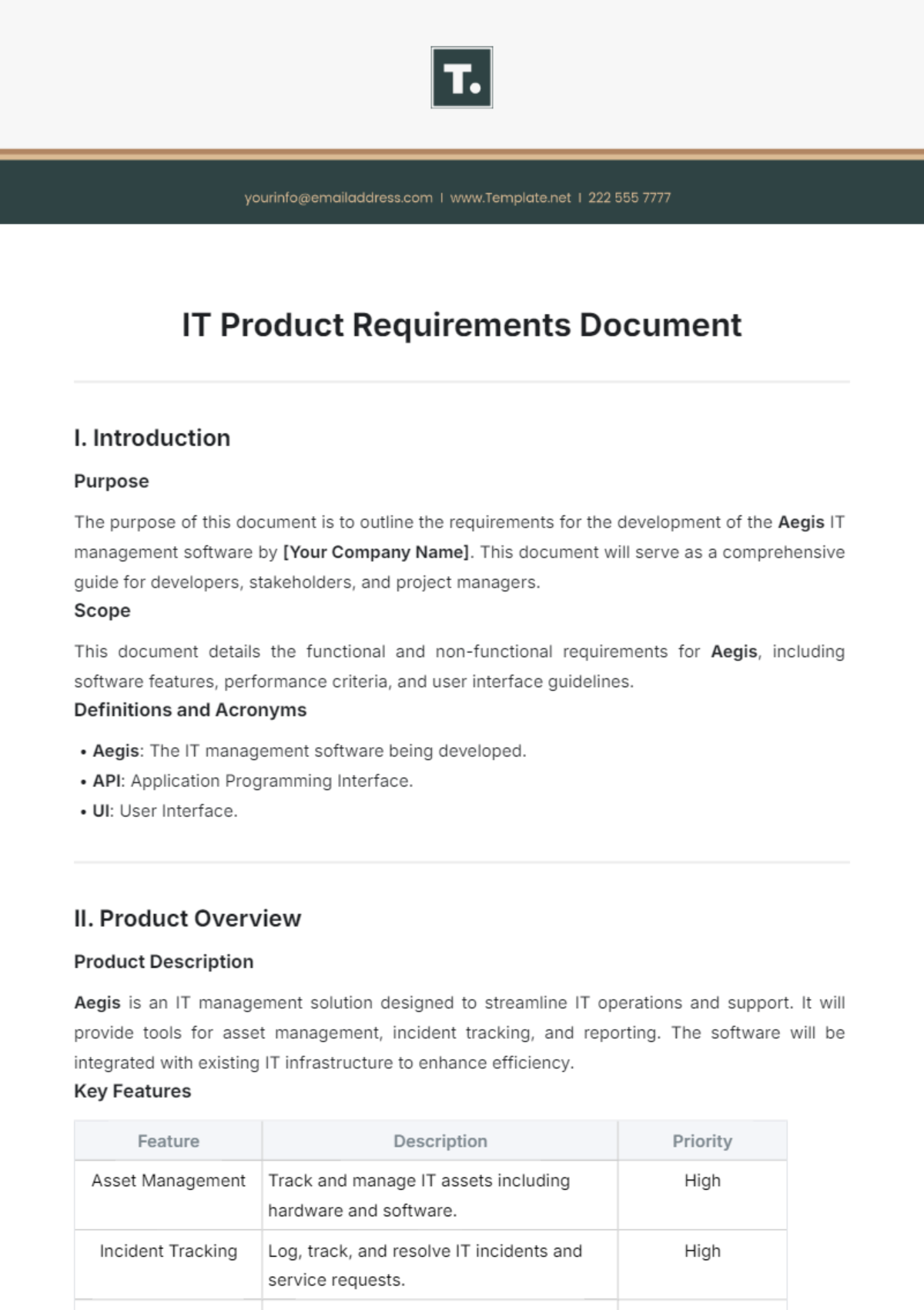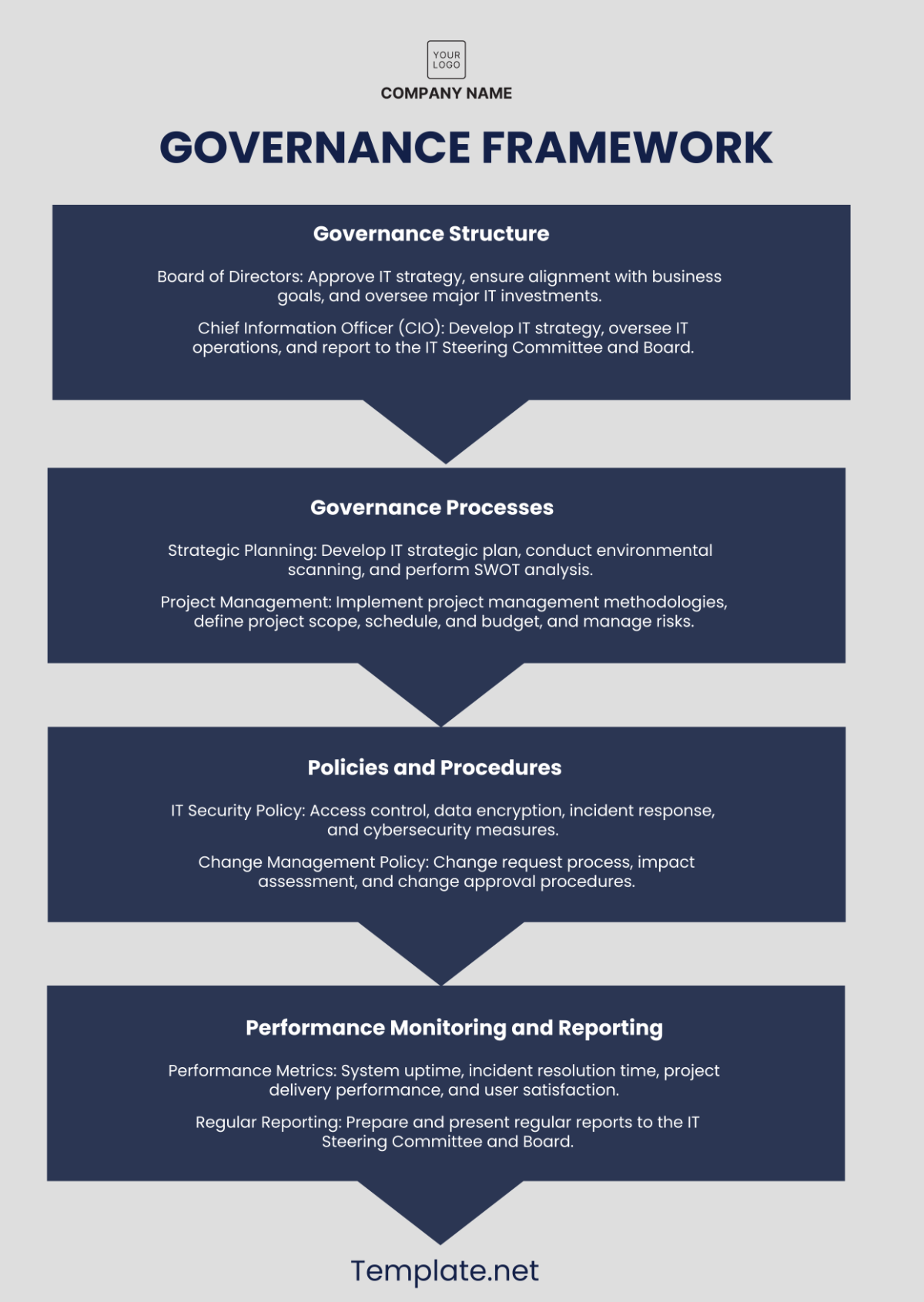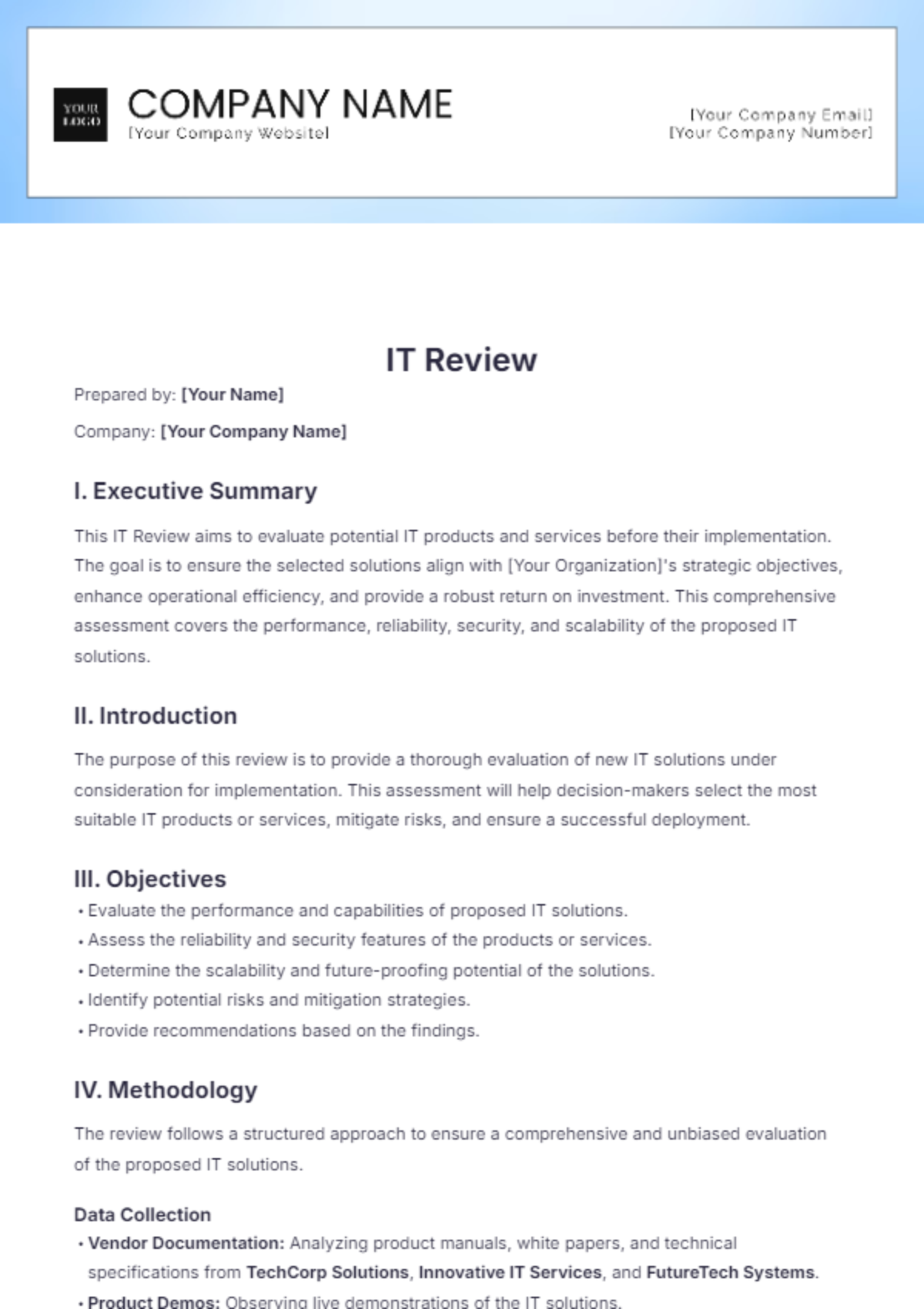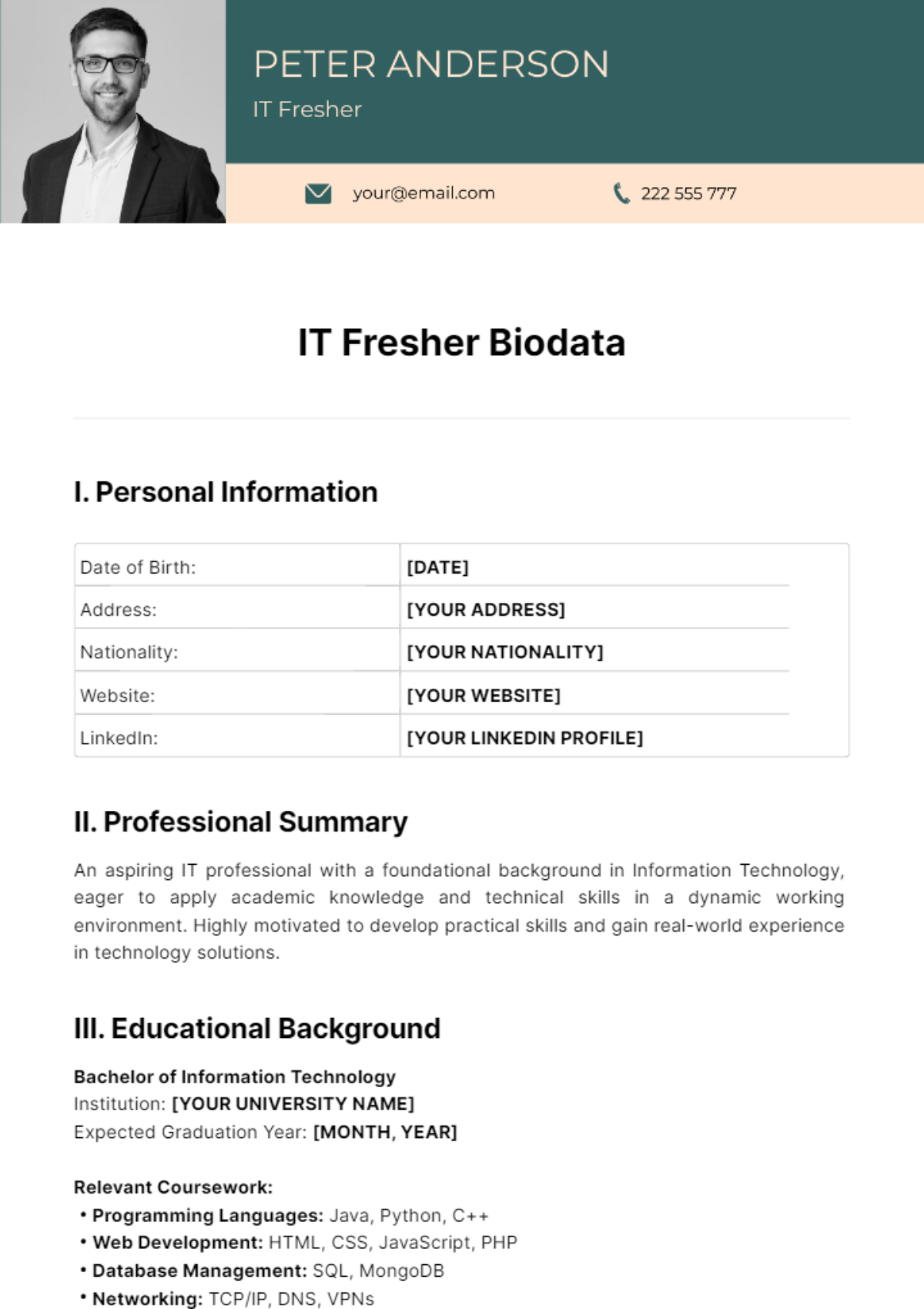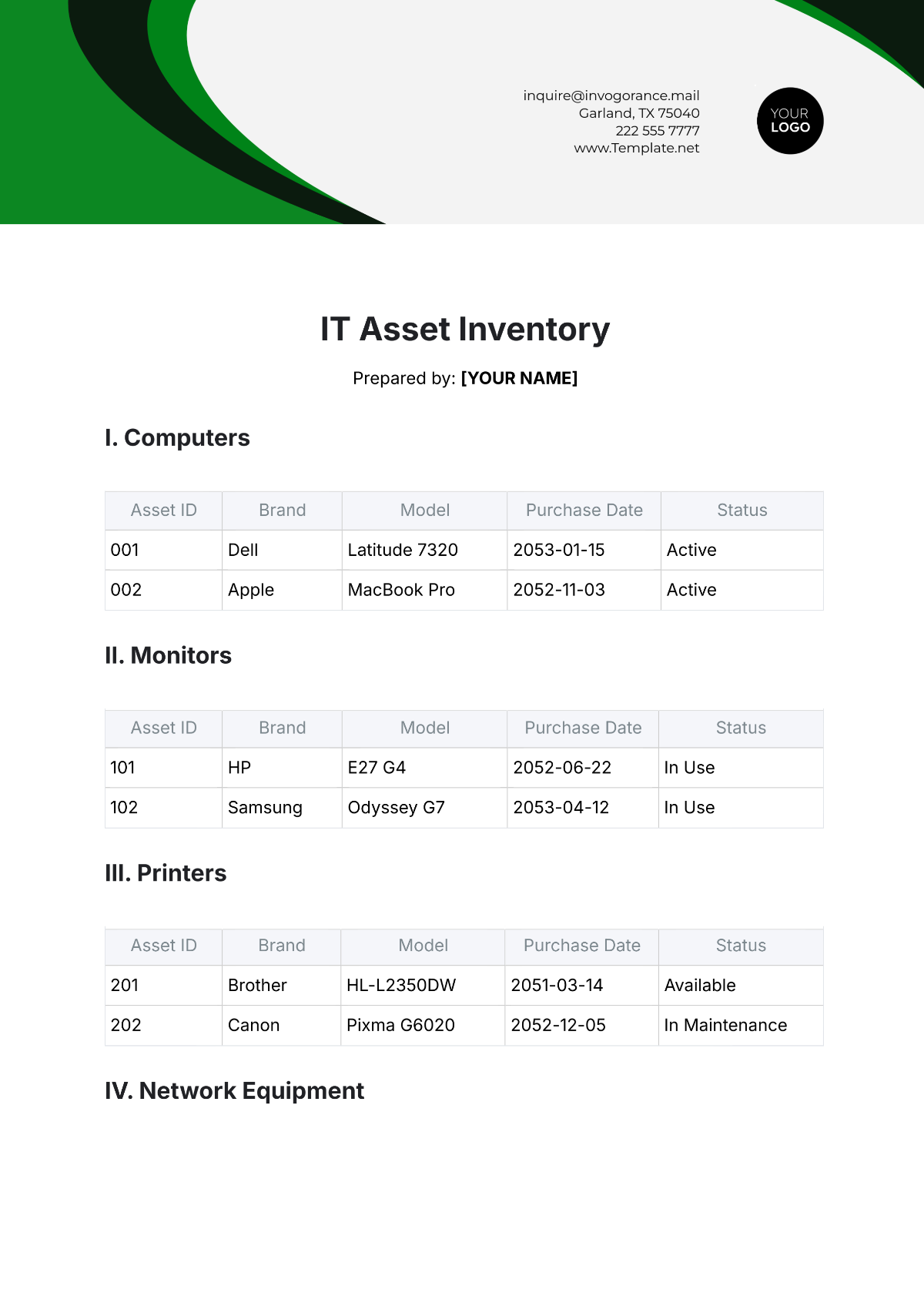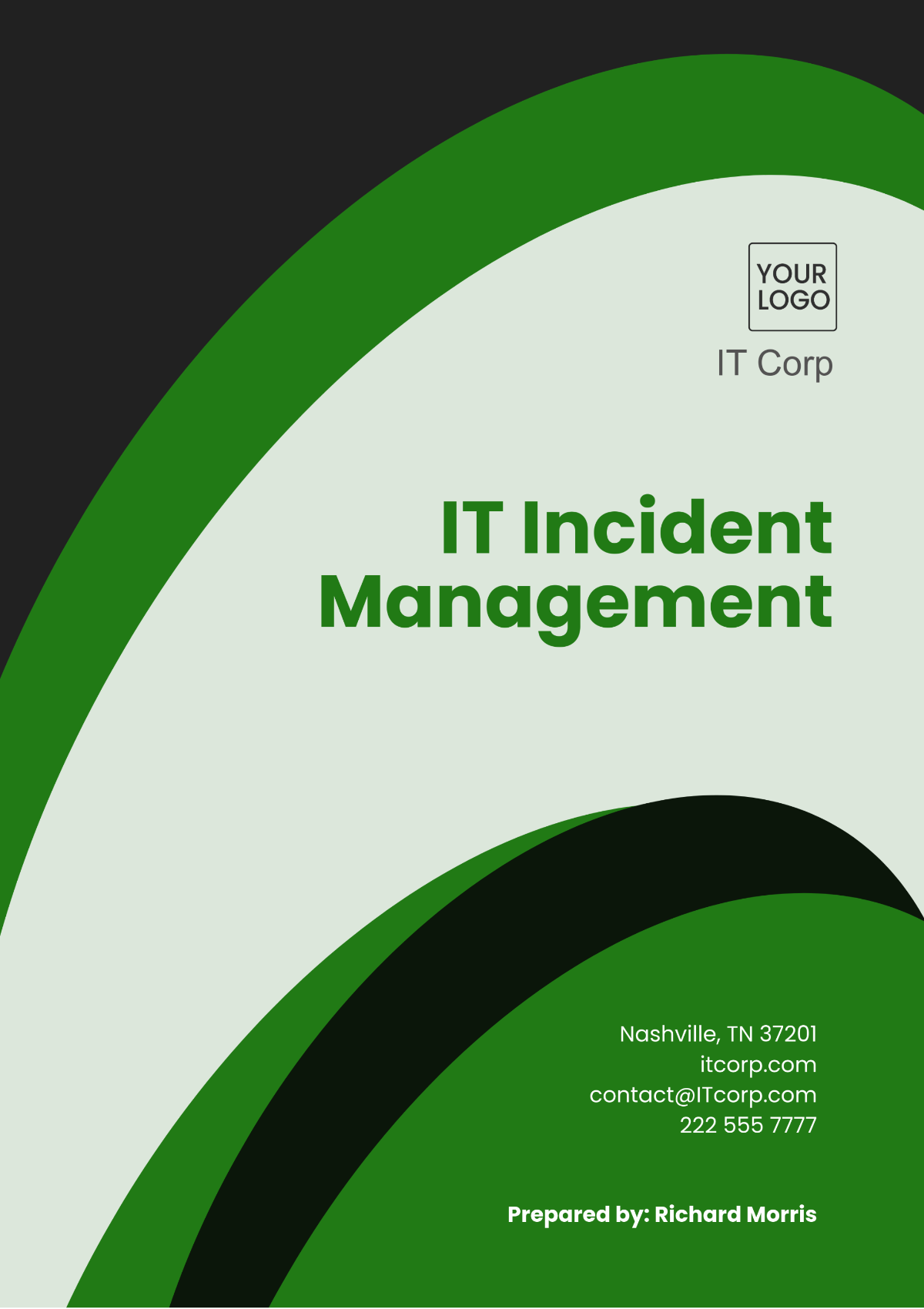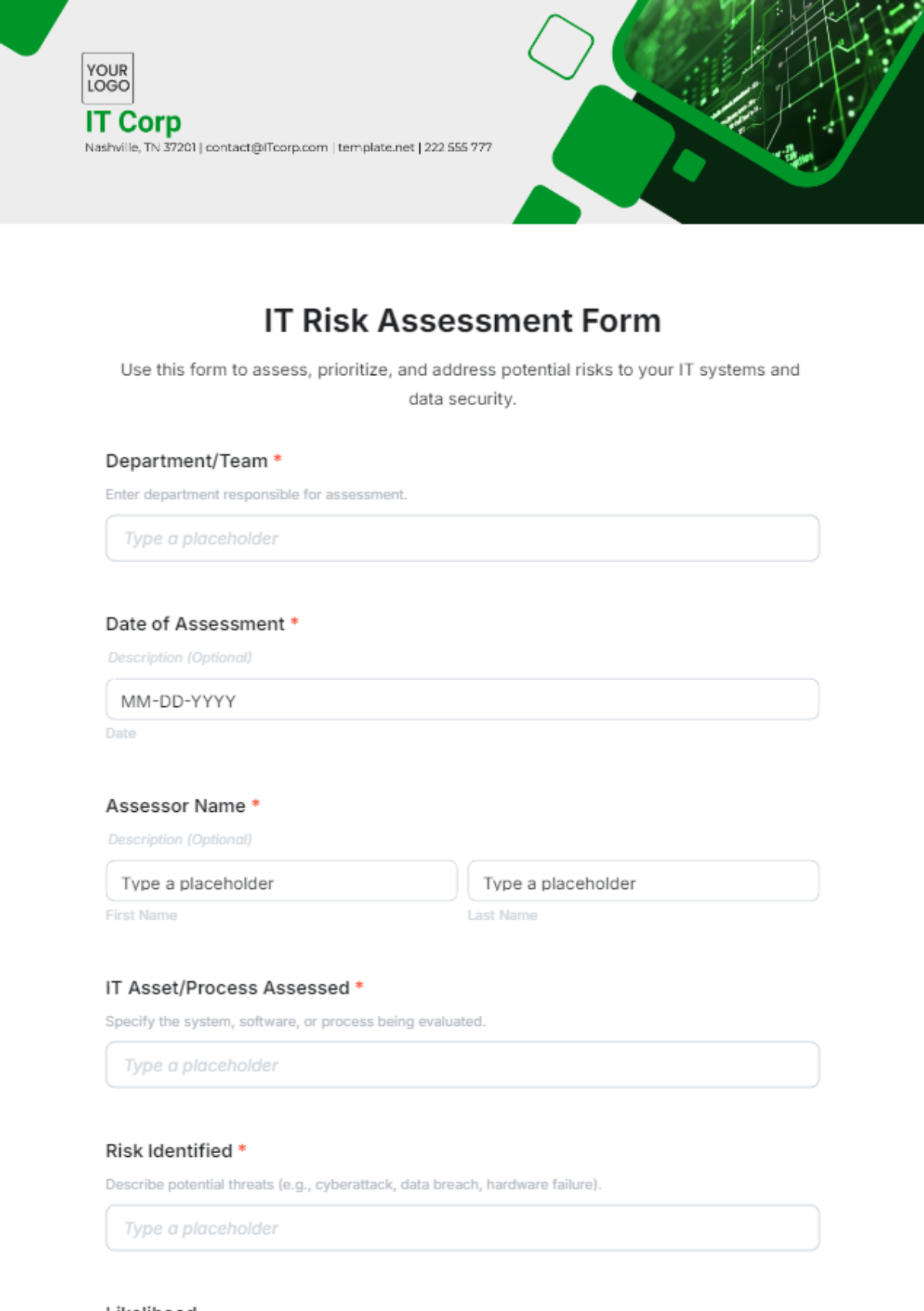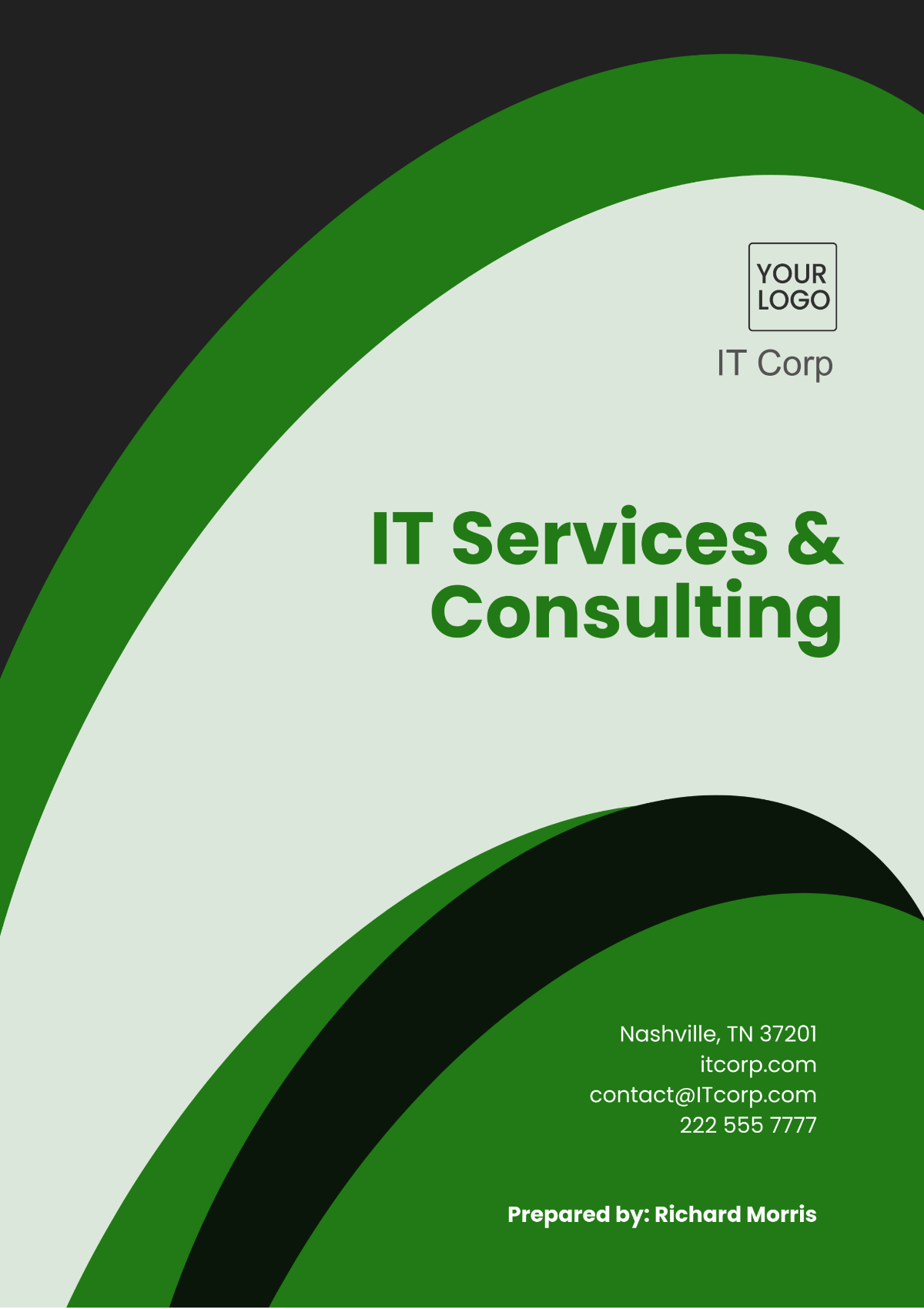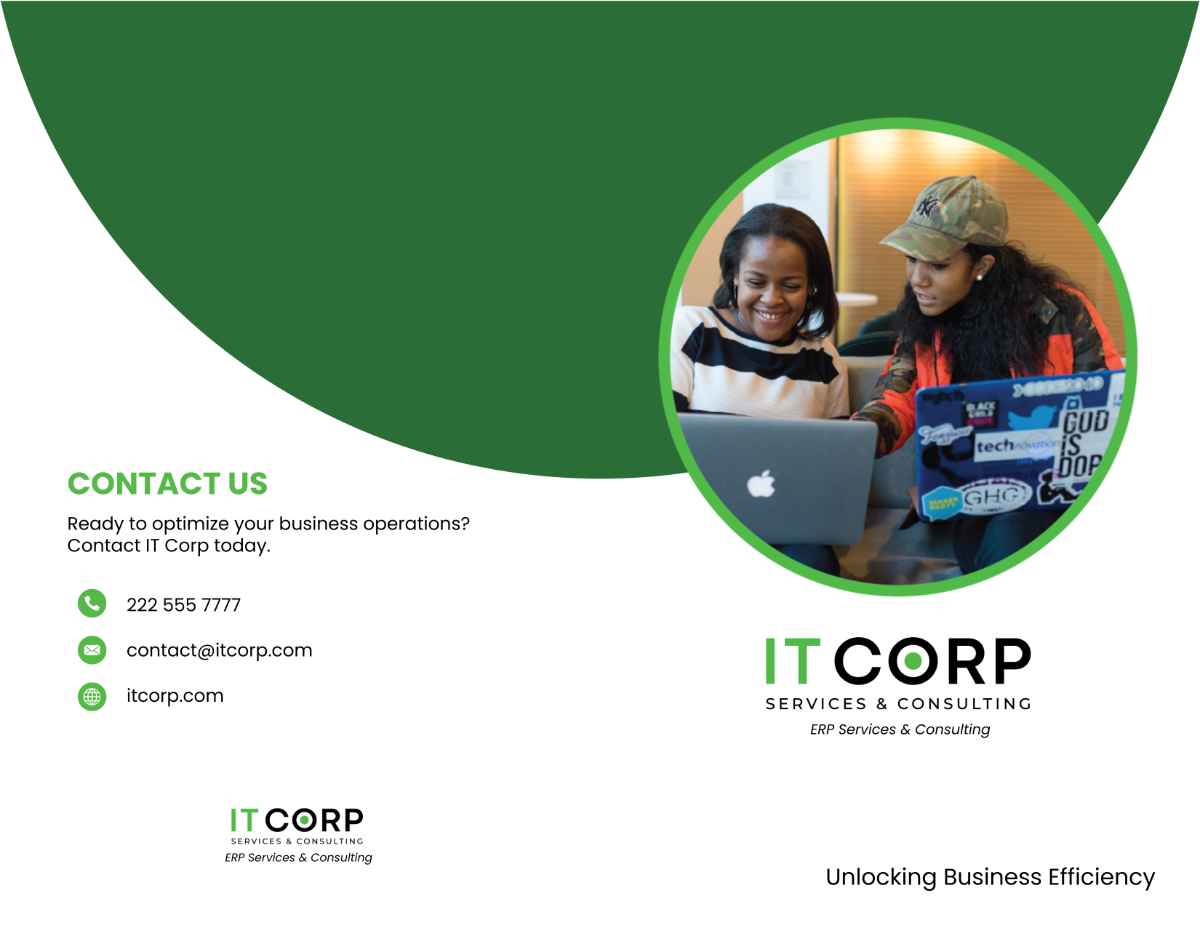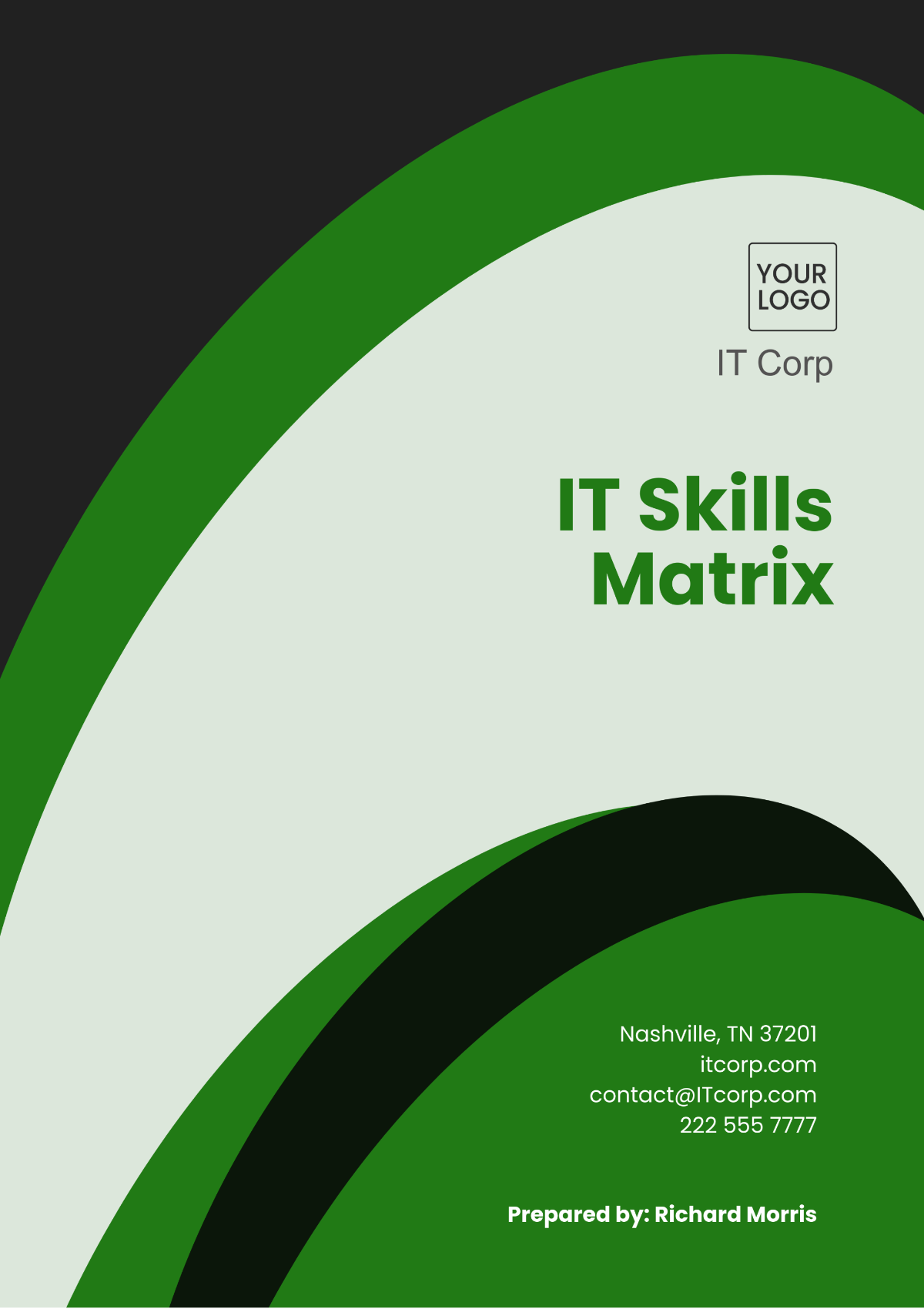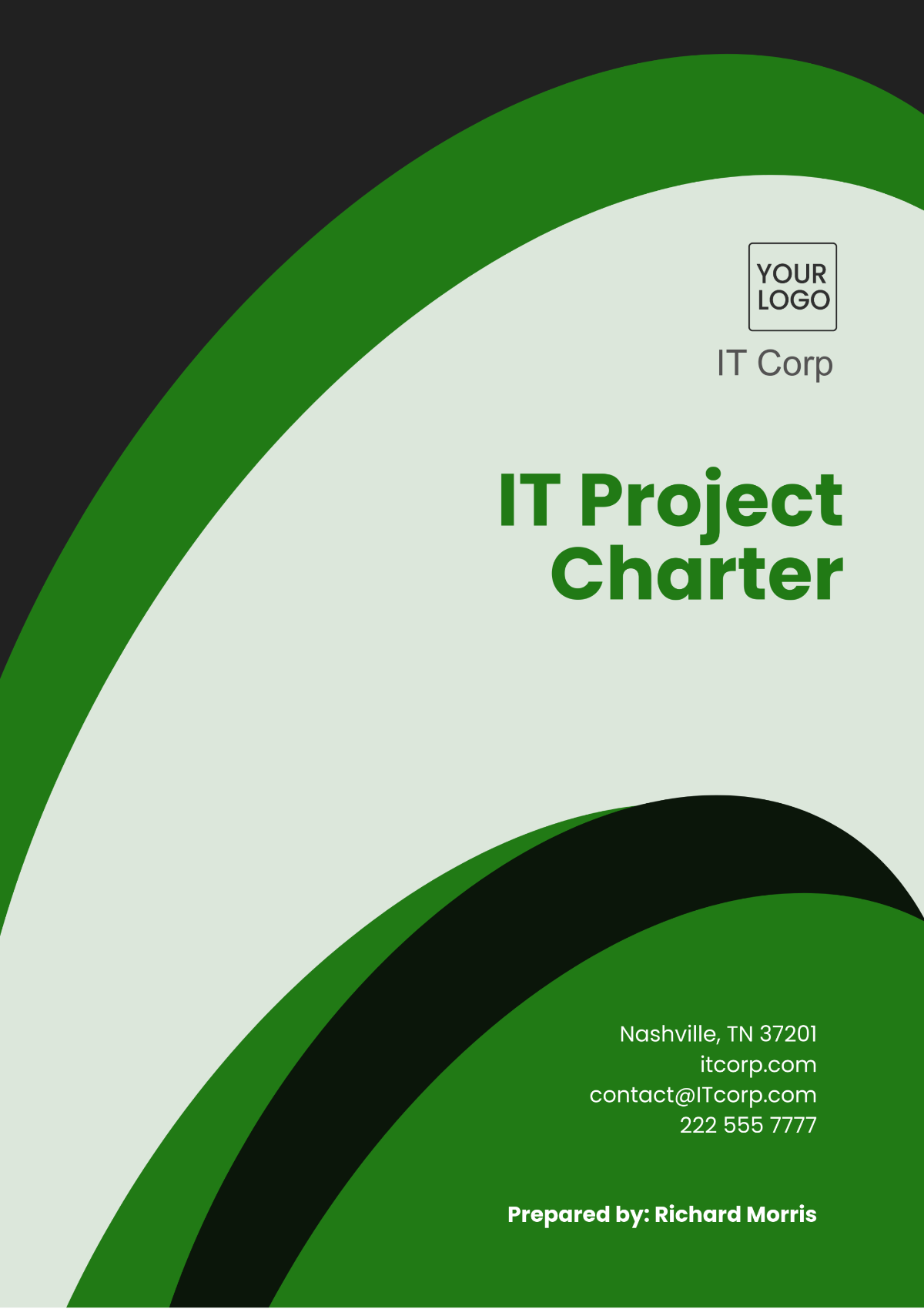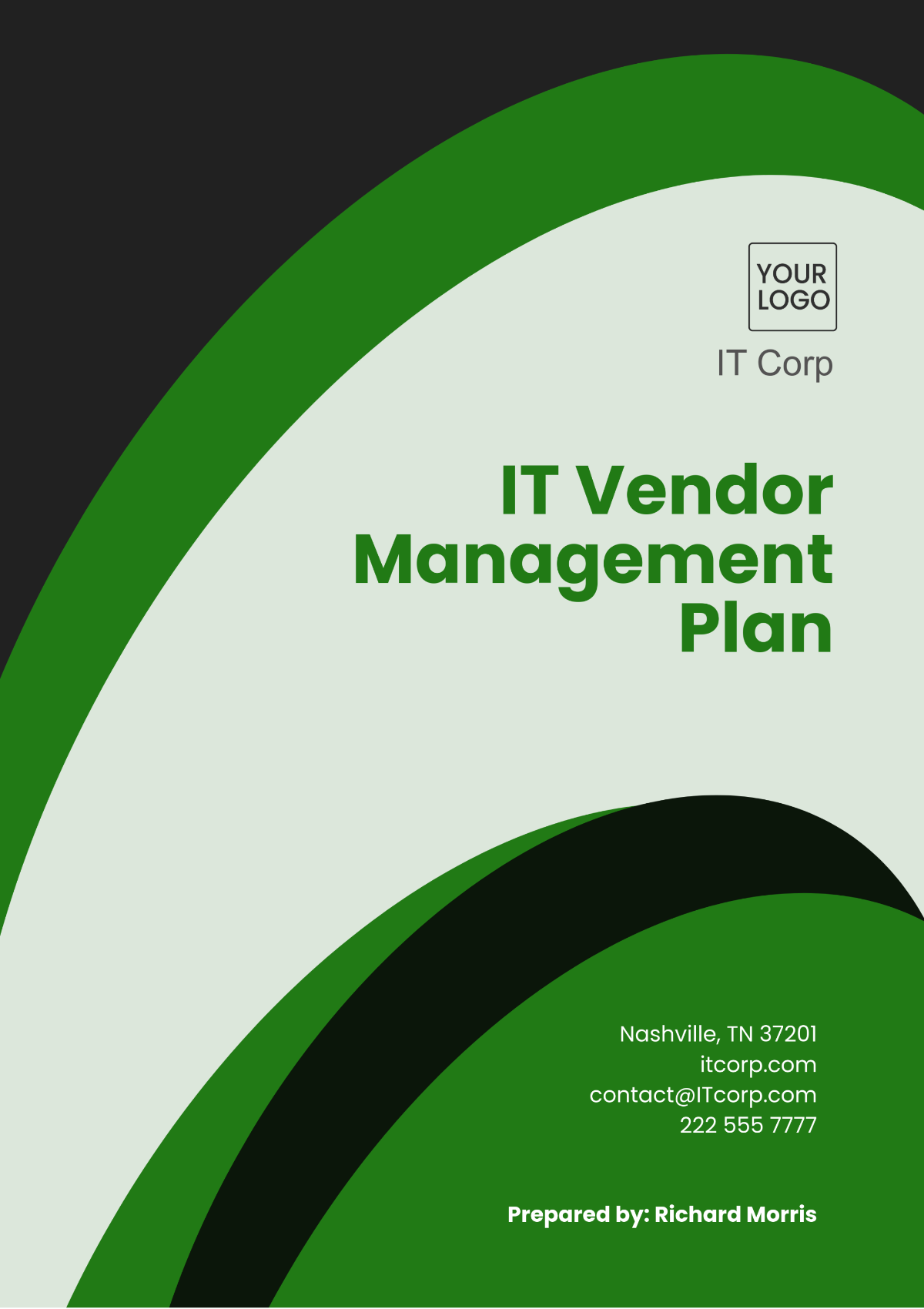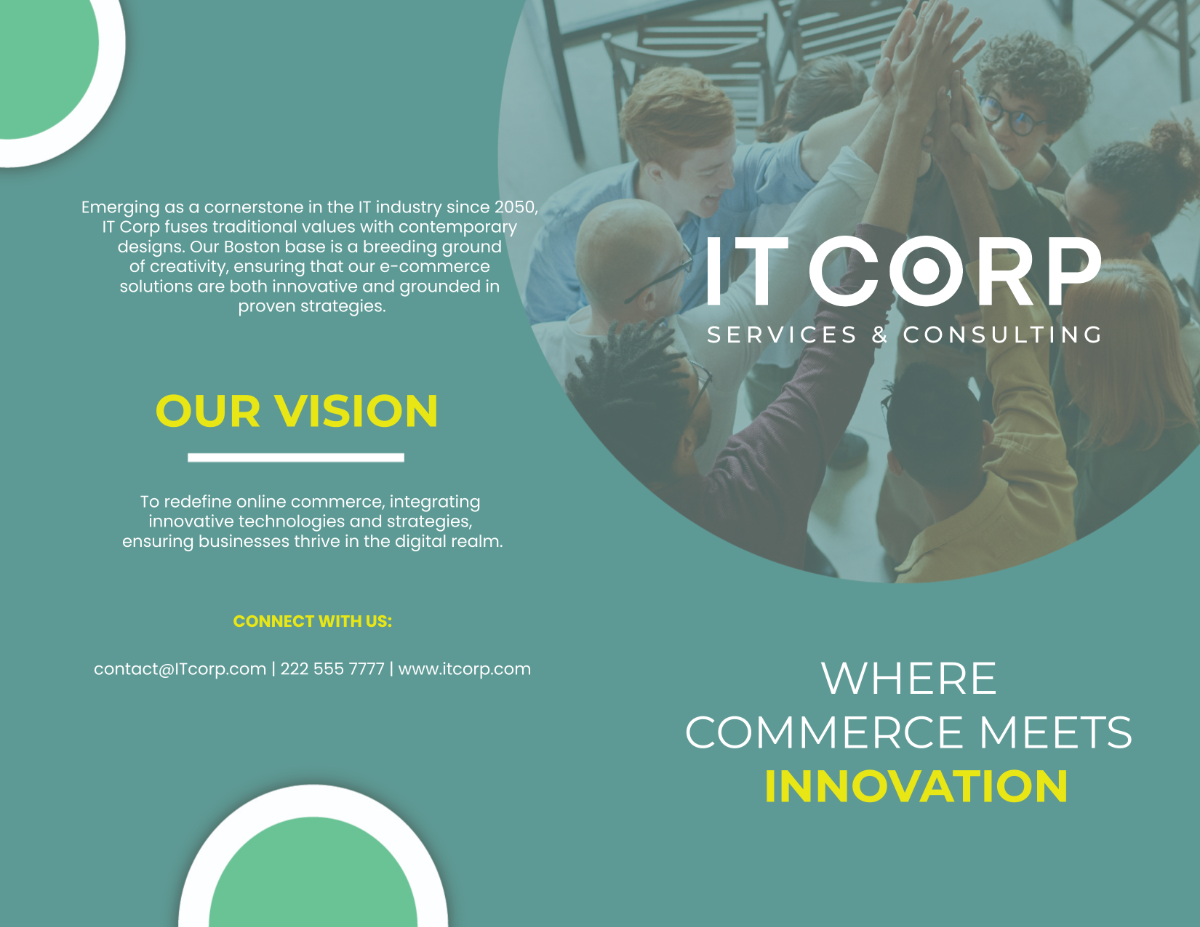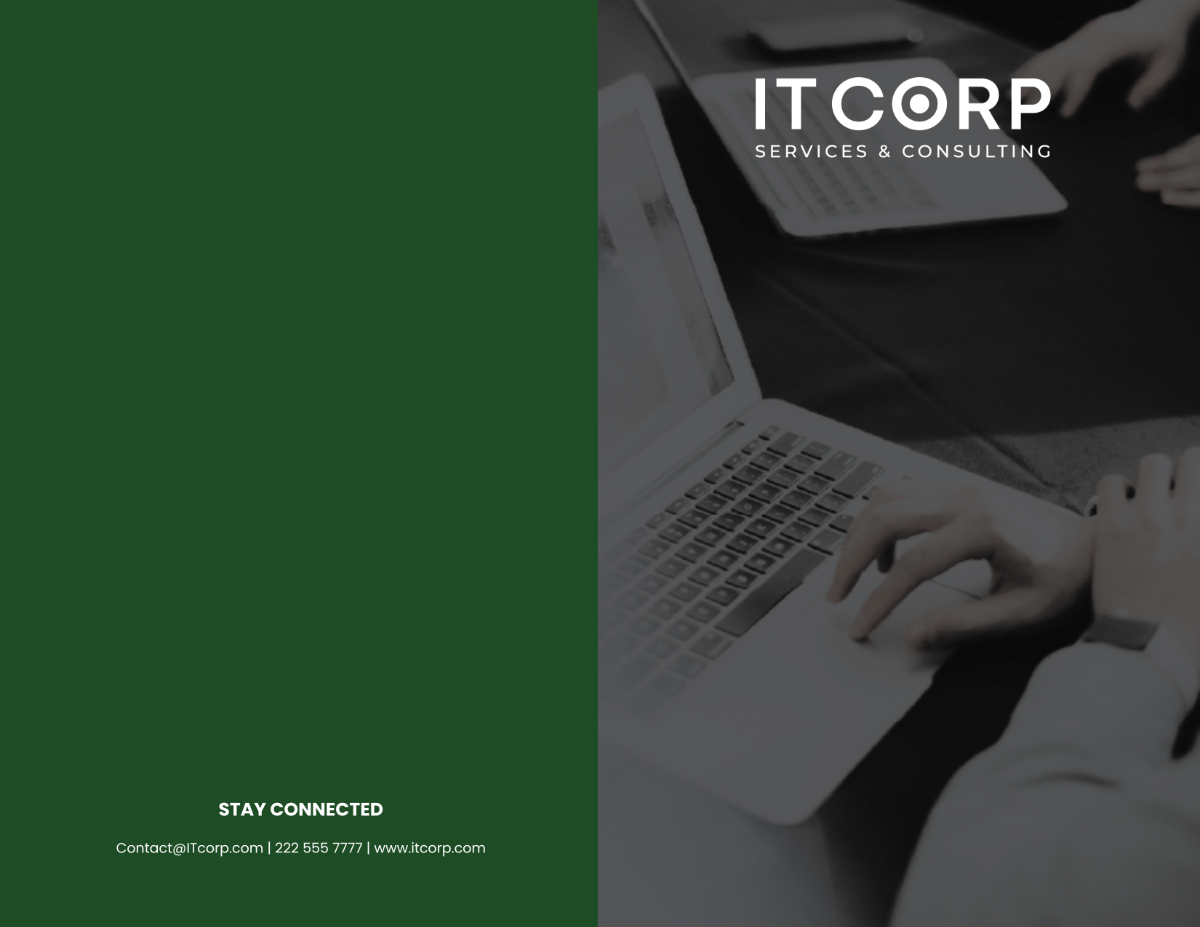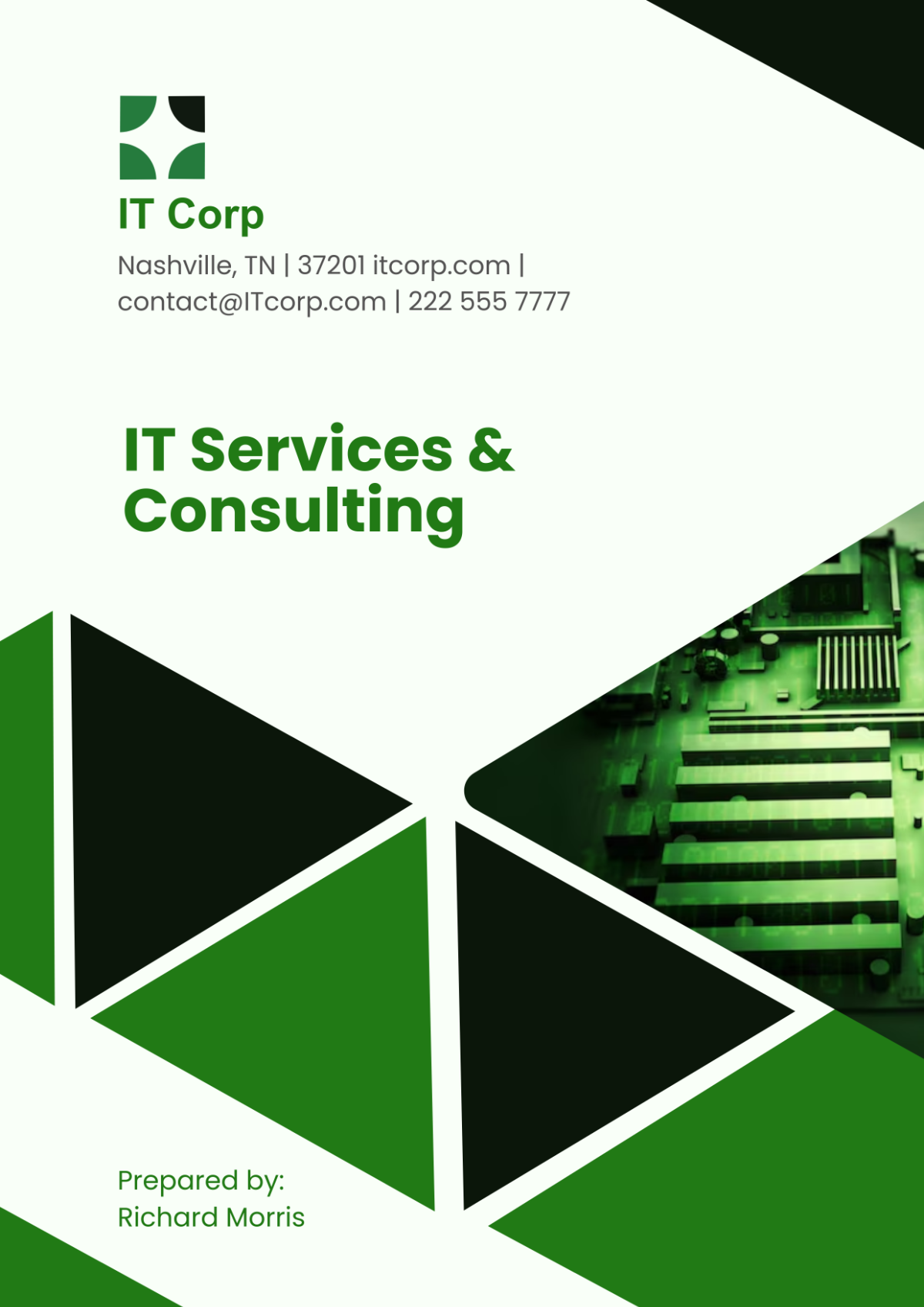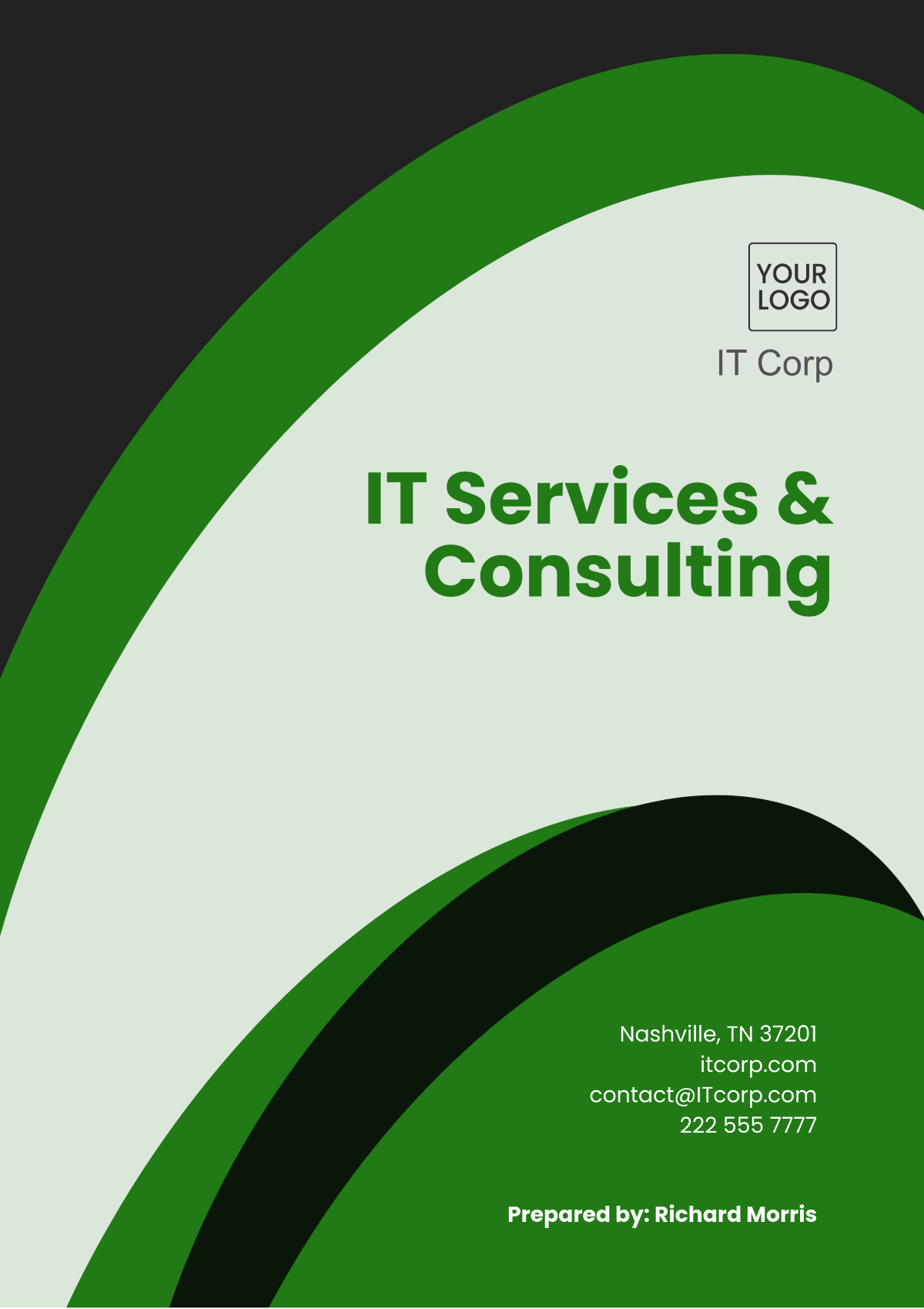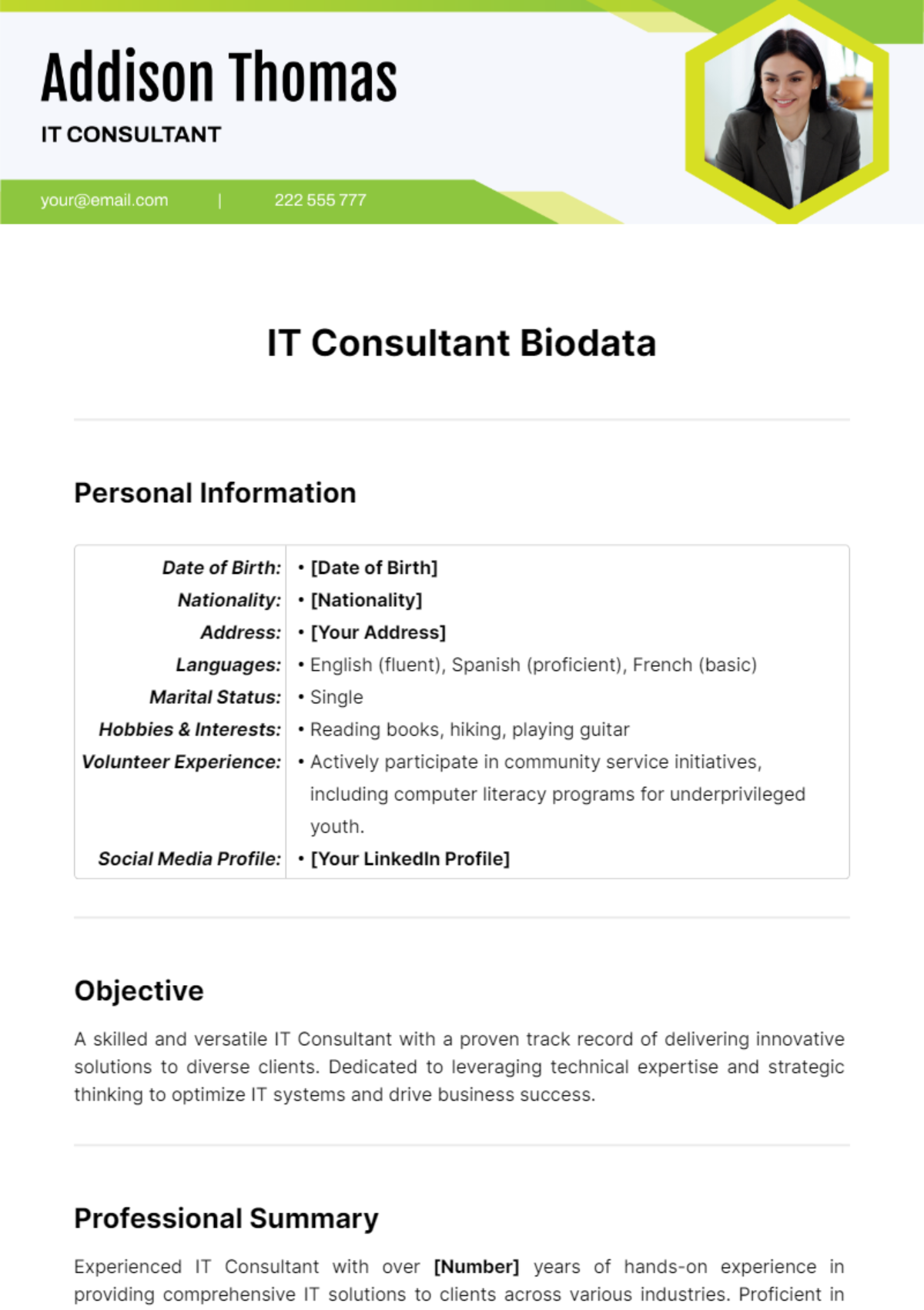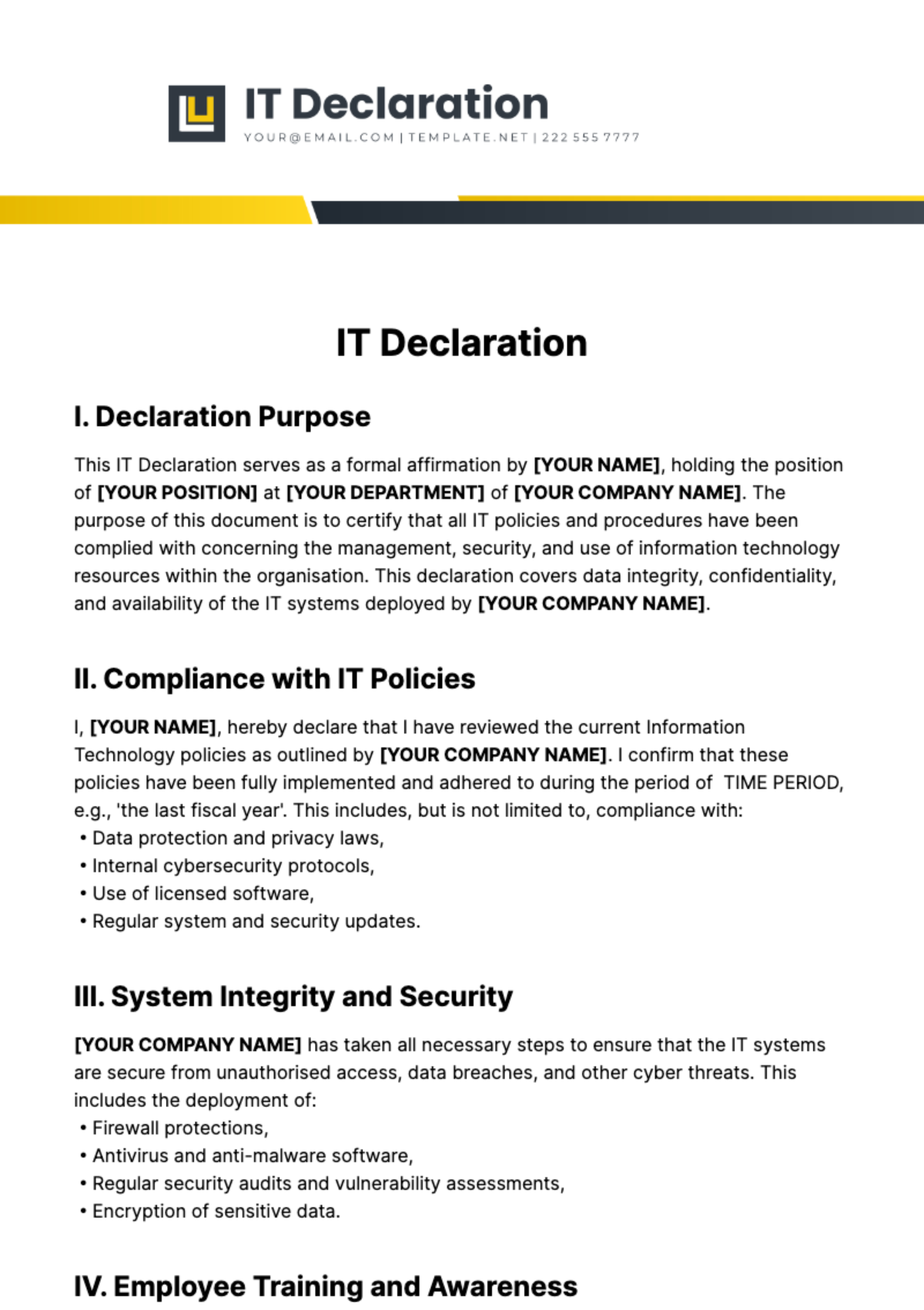IT Skills Matrix
1. Introduction
The IT Skills Matrix is a critical framework for [Your Company Name], designed to evaluate, categorize, and manage the vast array of technical skills present within our organization. As technology continues to evolve at an unprecedented pace, the importance of having a structured approach to skill assessment and development becomes paramount. This document provides a comprehensive overview of the essential skills required in our IT department, segmented into various domains such as software development, data management, cybersecurity, and project management.
With the advent of new technologies and methodologies leading up to [2050], the need for continuous improvement and skill development in the IT sector cannot be overstated. By utilizing the IT Skills Matrix, we aim to identify skill gaps, align training resources, and ensure optimal project staffing. This proactive approach will not only enhance the productivity and efficiency of our teams but also equip them with the necessary tools to navigate the complexities of future technological landscapes.
2. Purpose of the IT Skills Matrix
The primary objectives of the IT Skills Matrix at [Your Company Name] can be elaborated into the following areas:
2.1. Identifying Skill Gaps
Assessment of Current Skills: Regular evaluations of the existing skills of team members are essential to determine how well they align with the requirements of ongoing and future projects. By conducting skill assessments at least bi-annually, we can ensure that our teams remain competitive and capable of addressing project demands.
Future Skill Needs: As we anticipate the arrival of new technologies and methodologies, we must predict the skills that will be necessary. This foresight allows us to prepare our workforce adequately, ensuring they are equipped to tackle challenges and leverage new opportunities effectively.
2.2. Aligning Training Resources
Targeted Training Programs: By developing targeted training programs that focus on filling identified skill gaps, we can ensure that our workforce can adapt to new challenges effectively. Training should encompass a blend of in-person workshops, online courses, and mentorship programs tailored to the specific needs of employees.
Continuous Learning Culture: Fostering a culture of continuous learning is crucial for our long-term success. Employees should be encouraged to pursue further education and certifications relevant to their roles, with the company providing resources such as tuition reimbursement or time off for study purposes.
2.3. Enhancing Team Performance
Effective Project Staffing: The matrix allows us to match project teams with individuals whose skills align closely with project requirements. This alignment enhances overall performance and increases the likelihood of project success.
Collaboration Across Teams: By identifying complementary skills across different IT teams, we can foster collaboration and innovation. Encouraging cross-functional projects can lead to the development of creative solutions and enhance overall team dynamics.
3. Skill Categories
The IT Skills Matrix is organized into key categories, each encompassing a range of essential skills and competencies, along with their corresponding proficiency levels. The following categories will be covered in detail:
Software Development
Data Management
Cybersecurity
Project Management
Networking and Infrastructure
Cloud Computing
Technical Support
Emerging Technologies
3.1. Software Development
This category encompasses a wide array of programming languages, frameworks, and methodologies necessary for creating software applications.
3.1.1. Programming Languages
Skill/ Language | Proficiency Level (Beginner, Intermediate, Advanced) | Number of Employees Proficient |
|---|---|---|
Python | Advanced | [10] |
Java | Intermediate | [15] |
JavaScript | Advanced | [12] |
C# | Intermediate | [8] |
Ruby | Beginner | [5] |
Python: As a versatile language, Python is widely used for web development, data analysis, and machine learning. The team is composed of [10] advanced Python developers who excel at creating efficient algorithms and data processing scripts. Moreover, with the rise of AI and machine learning, additional training sessions focusing on Python's libraries such as TensorFlow and PyTorch will be implemented to further enhance our capabilities.
Java: With a strong presence in enterprise applications, [Your Company Name] has [15] employees skilled in Java, particularly in the Spring framework. Ongoing training and mentorship opportunities will be provided to elevate junior developers from intermediate to advanced levels, focusing on best practices in software development.
JavaScript: The demand for JavaScript skills continues to grow with the rise of front-end frameworks. Our team boasts [12] advanced JavaScript developers proficient in frameworks like React and Angular. As these technologies evolve, we plan to host regular workshops to keep the team updated on the latest best practices and features.
3.1.2. Development Frameworks
Framework | Proficiency Level (Beginner, Intermediate, Advanced) | Number of Employees Proficient |
|---|---|---|
React | Advanced | [8] |
Angular | Intermediate | [10] |
Django | Beginner | [5] |
.NET | Advanced | [7] |
React: Our developers utilize React extensively for building user interfaces, with [8] proficient in its advanced features and state management. To further deepen expertise, advanced courses on performance optimization and server-side rendering will be introduced.
Angular: Currently, [10] team members possess intermediate skills in Angular, and there is significant potential for targeted training to enhance this proficiency. We aim to transition these employees into advanced users through practical workshops and collaborative projects.
3.2. Data Management
Data is one of the most valuable assets of any organization. Mastery in data management ensures effective data handling, storage, and analysis.
3.2.1. Database Technologies
Database Technology | Proficiency Level (Beginner, Intermediate, Advanced) | Number of Employees Proficient |
|---|---|---|
MySQL | Advanced | [9] |
PostgreSQL | Intermediate | [7] |
MongoDB | Intermediate | [6] |
Oracle | Beginner | [4] |
MySQL: With a significant number of applications utilizing MySQL, our [9] advanced users can optimize database performance and manage complex queries effectively. To ensure that our knowledge remains current, we will provide access to online courses covering advanced optimization techniques and best practices.
PostgreSQL: The [7] intermediate PostgreSQL users have shown potential for growth in advanced database management. We will offer training that focuses on performance tuning, advanced querying techniques, and security best practices to elevate their skills.
3.2.2. Data Analysis and Visualization
Tool/ Language | Proficiency Level (Beginner, Intermediate, Advanced) | Number of Employees Proficient |
|---|---|---|
SQL | Advanced | [10] |
Tableau | Intermediate | [6] |
Power BI | Intermediate | [5] |
SQL: A foundational skill for data manipulation and querying, [Your Company Name] has [10] employees at an advanced level. Regular training sessions will ensure these professionals stay updated on the latest SQL features and best practices for data governance.
Tableau and Power BI: As key tools for data visualization, we have [6] employees skilled in Tableau and [5] in Power BI. To empower these teams further, we will establish a training program that focuses on advanced data visualization techniques, enabling them to create impactful dashboards and reports.
3.3. Cybersecurity
As cybersecurity threats continue to evolve, maintaining a robust security posture is paramount for [Your Company Name].
3.3.1. Security Protocols and Best Practices
Skill/Protocol | Proficiency Level (Beginner, Intermediate, Advanced) | Number of Employees Proficient |
|---|---|---|
Network Security | Intermediate | [7] |
Application Security | Intermediate | [5] |
Risk Management | Advanced | [4] |
Network Security: With [7] employees at the intermediate level, training sessions focusing on advanced security protocols and incident response strategies will be implemented. These sessions will cover essential topics such as intrusion detection, firewall management, and secure network design.
Application Security: [5] intermediate professionals are equipped to identify vulnerabilities in applications but require further training to transition them to advanced levels. We will facilitate workshops on secure coding practices and penetration testing to enhance their skills in this critical area.
3.3.2. Compliance and Regulations
Compliance Framework | Proficiency Level (Beginner, Intermediate, Advanced) | Number of Employees Proficient |
|---|---|---|
GDPR | Intermediate | [6] |
HIPAA | Beginner | [3] |
ISO 27001 | Advanced | [2] |
GDPR: With [6] team members possessing intermediate knowledge of GDPR compliance, it is vital to provide resources that ensure complete understanding and adherence to these regulations. Ongoing training will focus on privacy by design and data protection impact assessments.
ISO 27001: A vital framework for information security management, [2] of our employees are advanced. We will introduce specialized training sessions on the implementation and auditing of ISO 27001 standards to expand this knowledge base.
3.4. Project Management
Efficient project management ensures that IT projects are delivered on time and within budget, aligning with [Your Company Name]'s strategic goals.
3.4.1. Project Management Methodologies
Methodology | Proficiency Level (Beginner, Intermediate, Advanced) | Number of Employees Proficient |
|---|---|---|
Agile | Intermediate | [10] |
Waterfall | Advanced | [5] |
Scrum | Intermediate | [8] |
Agile: With [10] team members familiar with Agile methodologies, we plan to enhance our processes by offering advanced training in Scrum and Kanban frameworks to refine our approach to iterative development.
Waterfall: [5] advanced users are proficient in Waterfall methodology. As this traditional approach may still be relevant for certain projects, we will focus on developing their skills in managing risk and stakeholder communication.
3.4.2. Tools and Software
Tool | Proficiency Level (Beginner, Intermediate, Advanced) | Number of Employees Proficient |
|---|---|---|
JIRA | Intermediate | [9] |
Microsoft Project | Beginner | [4] |
Trello | Advanced | [7] |
JIRA: Our [9] intermediate JIRA users efficiently manage project backlogs and track progress. We will enhance their proficiency by introducing them to advanced reporting features and JIRA automation.
Trello: With [7] advanced users of Trello, we aim to conduct workshops on maximizing project organization and collaboration using this tool effectively.
3.5. Networking and Infrastructure
A solid understanding of networking principles and infrastructure is critical for maintaining robust IT operations.
3.5.1. Networking Concepts
Concept | Proficiency Level (Beginner, Intermediate, Advanced) | Number of Employees Proficient |
|---|---|---|
TCP/IP | Advanced | [6] |
DNS | Intermediate | [5] |
Routing and Switching | Intermediate | [8] |
TCP/IP: With [6] advanced users, we will conduct refresher courses focusing on optimizing network configurations and performance monitoring.
Routing and Switching: Our [8] intermediate team members will benefit from hands-on training sessions designed to deepen their understanding of routing protocols and switch configuration.
3.5.2. Infrastructure Management
Tool | Proficiency Level (Beginner, Intermediate, Advanced) | Number of Employees Proficient |
|---|---|---|
VMware | Intermediate | [7] |
Ansible | Intermediate | [6] |
VMware: With [7] intermediate users, we will offer training on virtual network configuration and management, enhancing our virtualization capabilities.
Ansible: Our [6] intermediate users will participate in workshops focused on automation best practices to optimize infrastructure management.
3.6. Cloud Computing
As organizations increasingly adopt cloud technologies, expertise in this area is vital for operational success.
3.6.1. Cloud Service Providers
Provider | Proficiency Level (Beginner, Intermediate, Advanced) | Number of Employees Proficient |
|---|---|---|
AWS | Intermediate | [7] |
Azure | Beginner | [5] |
Google Cloud | Beginner | [3] |
AWS: With [7] employees at the intermediate level, we have a solid foundation for cloud services but will require further training in advanced AWS features. Future training will include AWS certification programs to deepen their expertise in cloud architecture.
Azure and Google Cloud: With [5] and [3] beginners respectively, comprehensive training programs will be essential to build foundational knowledge in these platforms. Our goal is to elevate our workforce to an intermediate level by [2050].
3.6.2. DevOps Practices
Practice | Proficiency Level (Beginner, Intermediate, Advanced) | Number of Employees Proficient |
|---|---|---|
Continuous Integration | Intermediate | [6] |
Containerization | Beginner | [4] |
Continuous Integration: Our [6] intermediate professionals are currently implementing CI/CD practices effectively, with a focus on enhancing automation in deployment. Additional training on pipeline creation and version control will be offered to improve efficiency.
Containerization: With [4] beginners, a strong emphasis on training in Docker and Kubernetes will help optimize deployment processes. We will aim to enhance their skills through hands-on workshops that simulate real-world scenarios.
3.7. Technical Support
Technical support plays a vital role in ensuring smooth operations across all IT services.
3.7.1. Support Skills and Tools
Skill/Tool | Proficiency Level (Beginner, Intermediate, Advanced) | Number of Employees Proficient |
|---|---|---|
Help Desk Software | Intermediate | [8] |
Remote Support Tools | Intermediate | [7] |
Troubleshooting Skills | Advanced | [6] |
Help Desk Software: Our [8] intermediate users effectively manage support tickets and customer inquiries, contributing to high user satisfaction rates. We will provide training to enhance their capabilities in analytics and reporting for better decision-making.
Troubleshooting Skills: Advanced troubleshooting capabilities are present in [6] employees, who play a pivotal role in resolving complex technical issues. We aim to implement a mentorship program where these advanced users can guide others in developing their problem-solving skills.
4. Emerging Technologies
As we look towards the future, it is essential to anticipate and prepare for emerging technologies that will shape the IT landscape.
4.1. Artificial Intelligence and Machine Learning
Proficiency Level: Beginner to Intermediate
Number of Employees Proficient: [4]
Training in AI and machine learning will become increasingly important as organizations leverage these technologies for analytics, automation, and decision-making. We will aim to expand our team's capabilities through workshops on AI algorithms and practical machine learning applications.
4.2. Internet of Things (IoT)
Proficiency Level: Beginner
Number of Employees Proficient: [2]
With the growth of IoT devices, understanding the implications of connected technologies will be crucial. Training will be implemented to provide employees with the knowledge required to work with IoT architectures and security considerations.
4.3. Blockchain Technology
Proficiency Level: Beginner
Number of Employees Proficient: [3]
As blockchain technology gains traction across various industries, building expertise in this area will be vital. We plan to develop training programs focusing on blockchain fundamentals, smart contracts, and potential use cases.
5. Conclusion
The IT Skills Matrix at [Your Company Name] is an indispensable asset for mapping the competencies of our IT workforce. As we navigate the landscape of technological advancements leading up to [2050], this matrix will guide our efforts in professional development, resource allocation, and strategic planning.
5.1. Action Plan
To optimize the effectiveness of the IT Skills Matrix, the following action steps will be implemented:
Regular Skill Assessments:
Conduct bi-annual skill assessments to update proficiency levels and identify new skills required as technology evolves.
Targeted Training Programs:
Develop and implement targeted training sessions and workshops based on the identified skill gaps, focusing on both foundational and advanced levels.
Mentorship Initiatives:
Establish mentorship programs where advanced employees can guide and support those in need of improvement, fostering a culture of collaboration and knowledge sharing.
Feedback Mechanism:
Implement a feedback mechanism to assess the effectiveness of training programs and continuously refine the IT Skills Matrix based on employee input and technological changes.
Emerging Technology Monitoring:
Keep abreast of emerging technologies and industry trends to adapt our training programs accordingly, ensuring our workforce remains relevant and competitive.
By focusing on these initiatives, [Your Company Name] will maintain a highly skilled workforce that can meet the challenges of the future and leverage technology to drive innovation and efficiency in all business operations.
6. References
Industry Skills Report, 2050.
IT Professional Certification Guide, 2050.
Technology Trends and Projections, 2050.
Cybersecurity Framework, 2050.
Project Management Best Practices, 2050.
Database Management Fundamentals, 2050.
Cloud Computing Principles, 2050.
7. Appendix
7.1. IT Skills Matrix Overview
Skill Category | Total Employees | Average Proficiency Level |
|---|---|---|
Software Development | [50] | Intermediate |
Data Management | [40] | Intermediate |
Cybersecurity | [30] | Intermediate |
Project Management | [25] | Intermediate |
Networking | [20] | Intermediate |
Cloud Computing | [20] | Intermediate |
Technical Support | [25] | Intermediate |
Emerging Technologies | [15] | Beginner |
7.2. Skill Gap Analysis
Skill Gap | Number of Employees Affected | Recommended Action |
|---|---|---|
Advanced Python | [5] | Targeted training |
Cloud Services | [10] | Comprehensive training |
Network Security | [5] | Workshops and resources |
Application Security | [3] | Advanced training |
Project Management | [5] | Certification programs |
